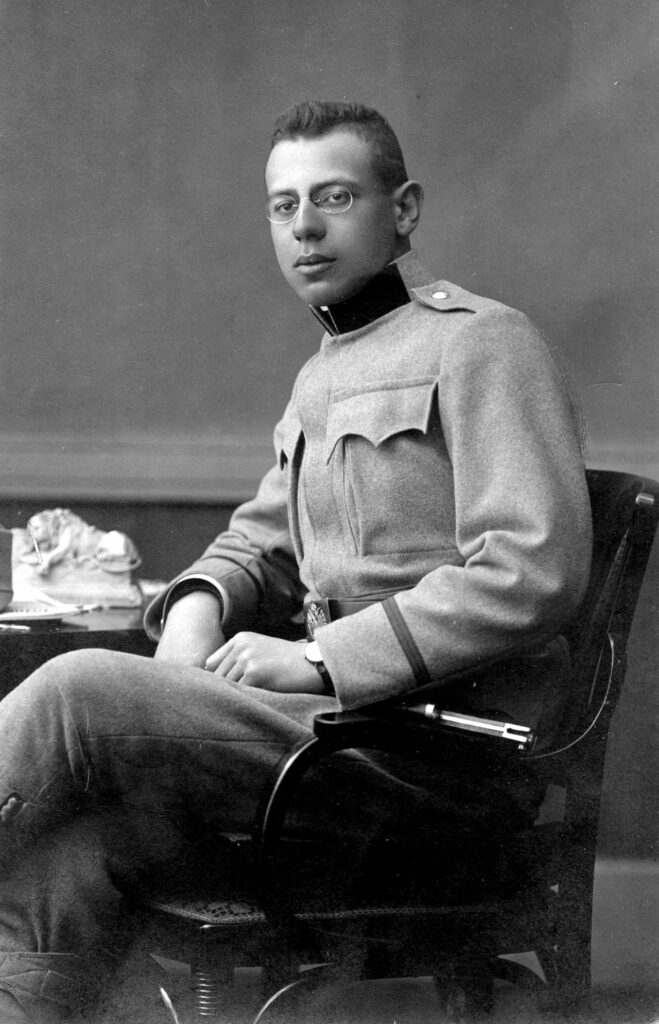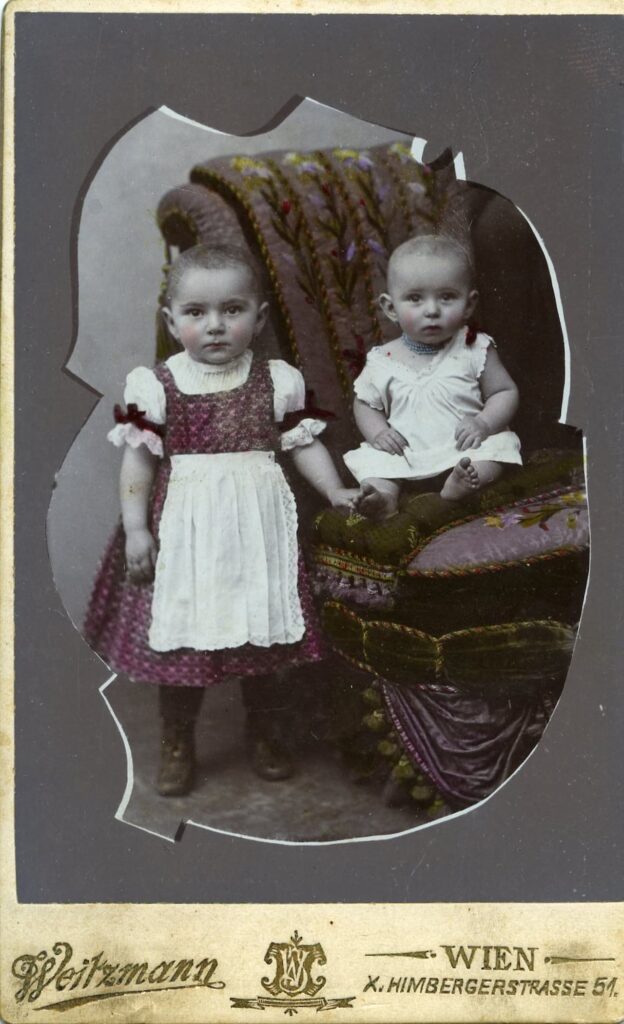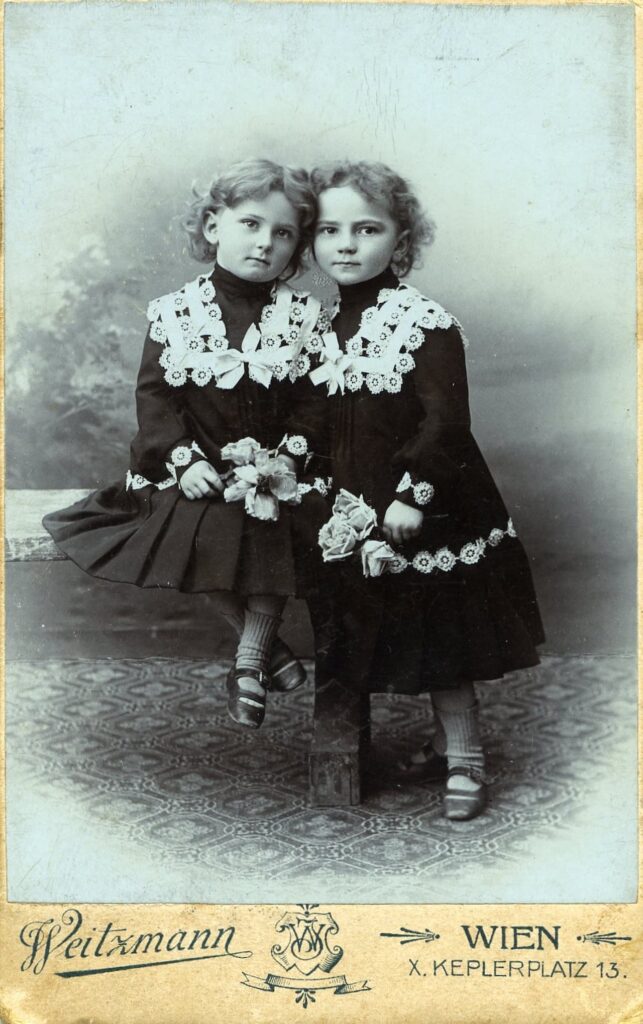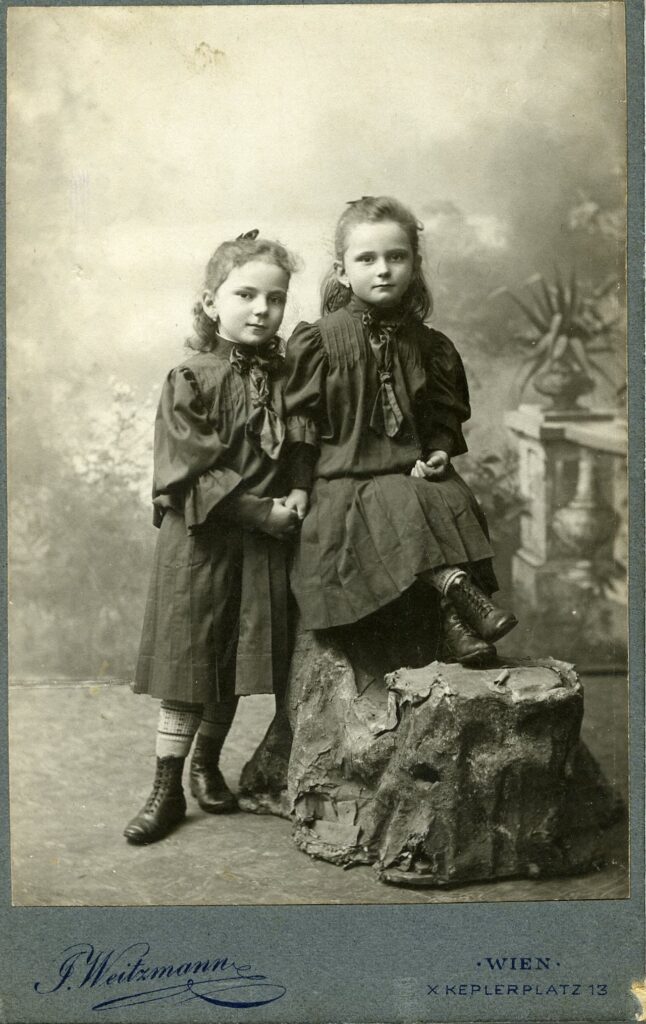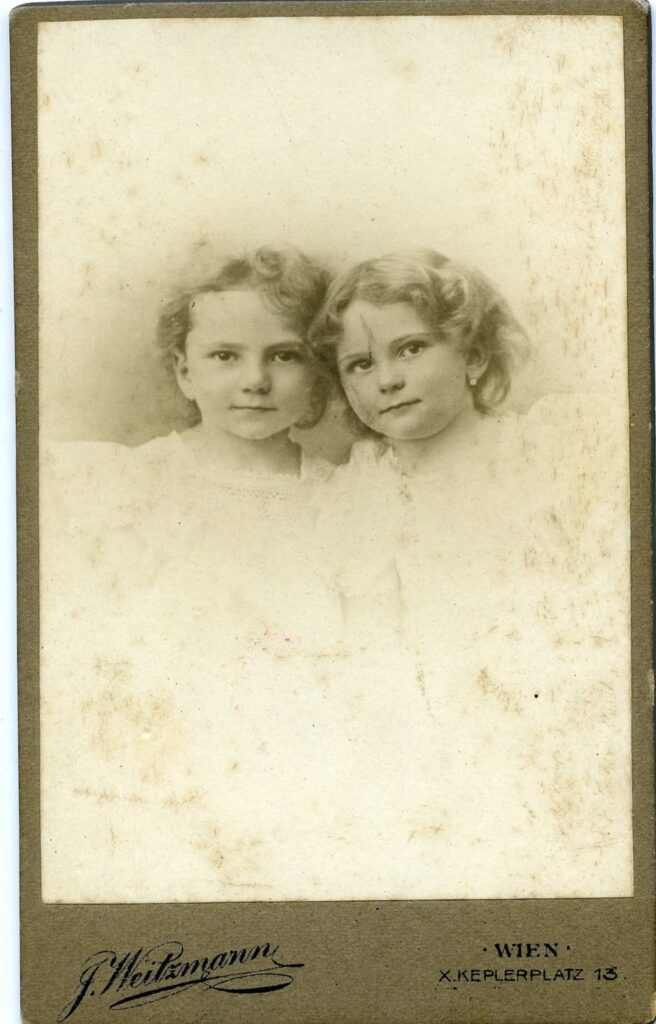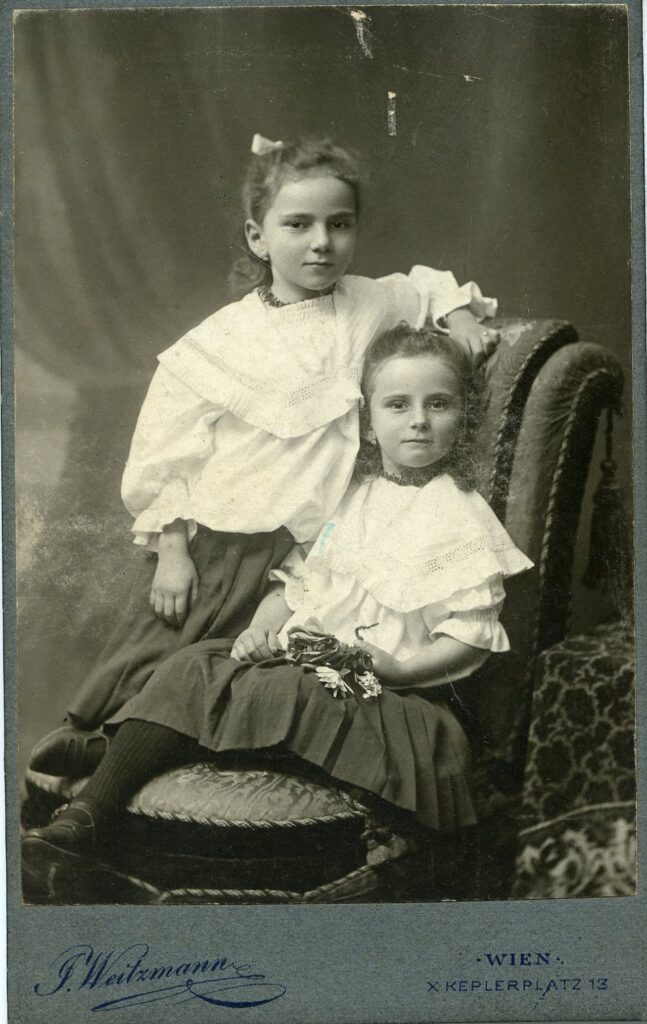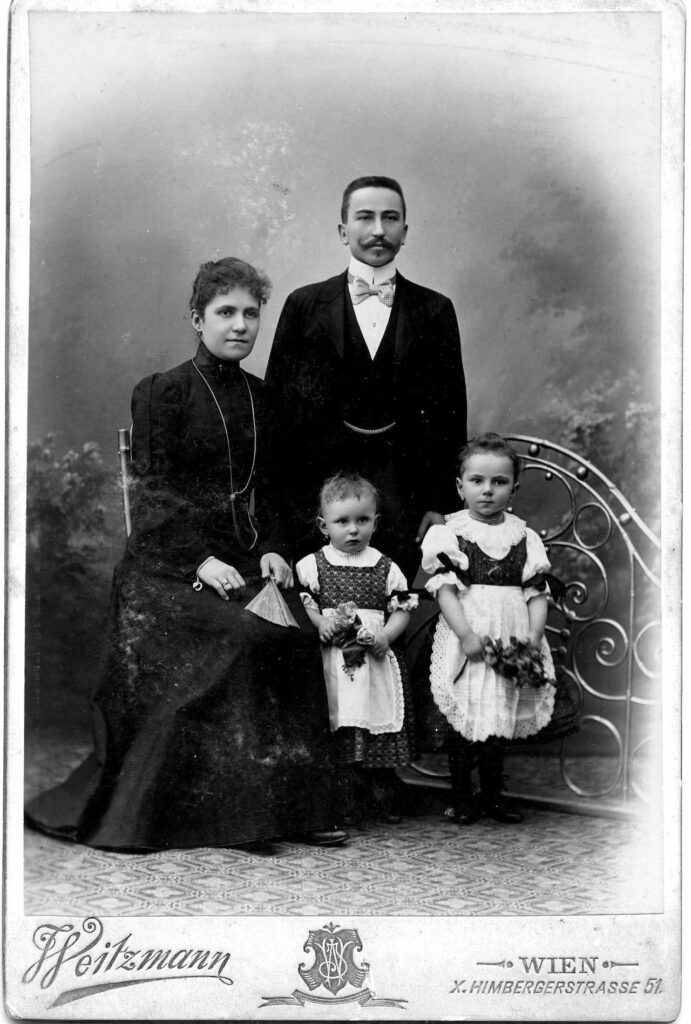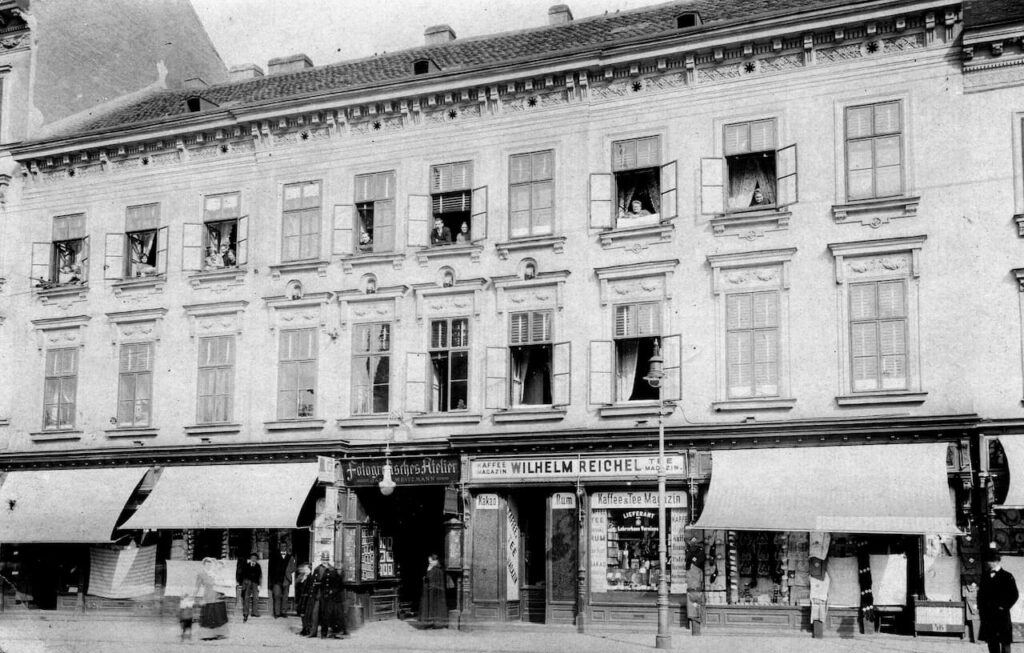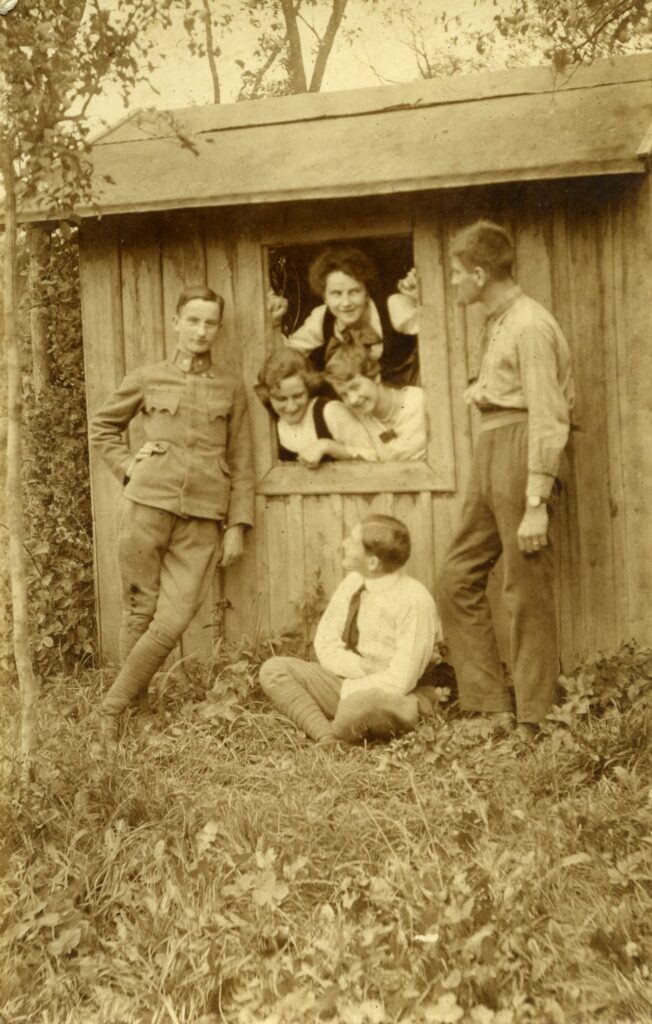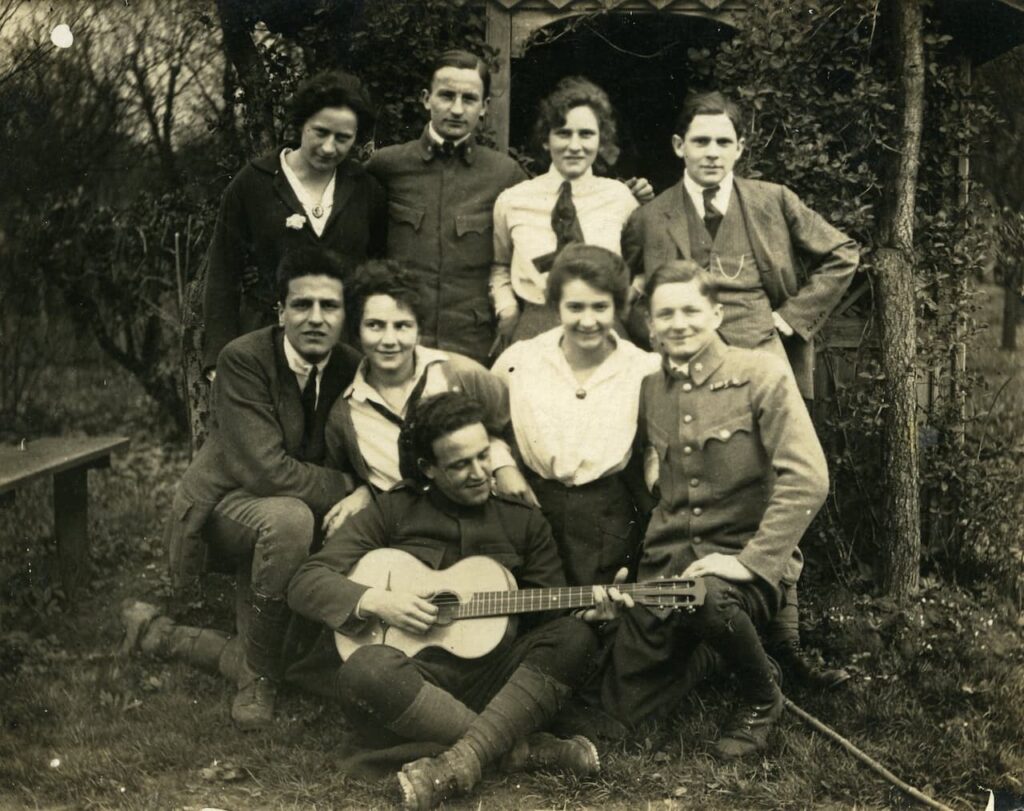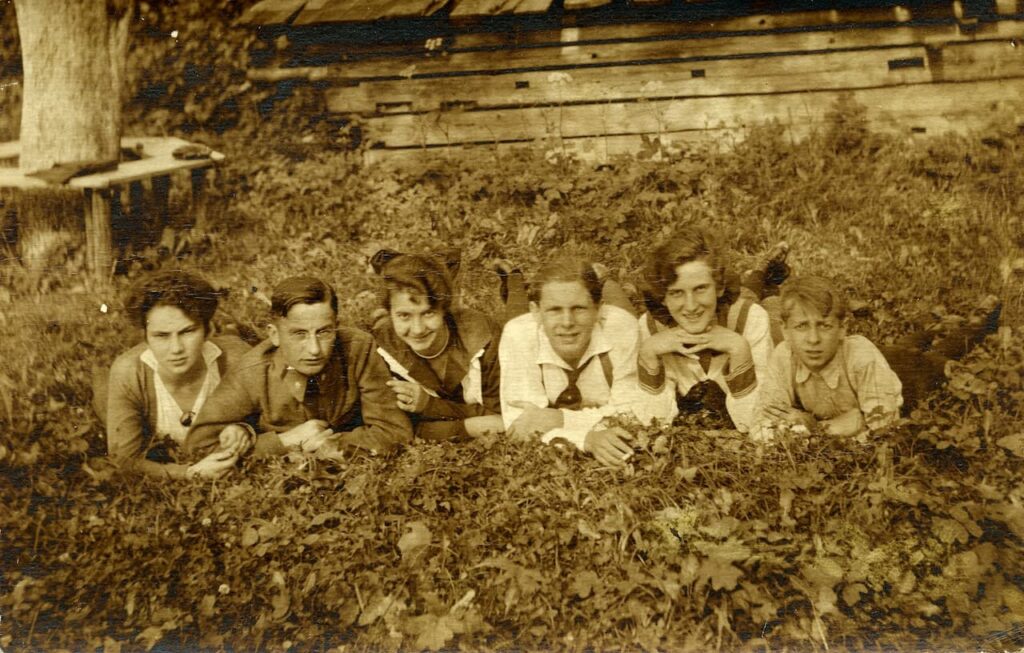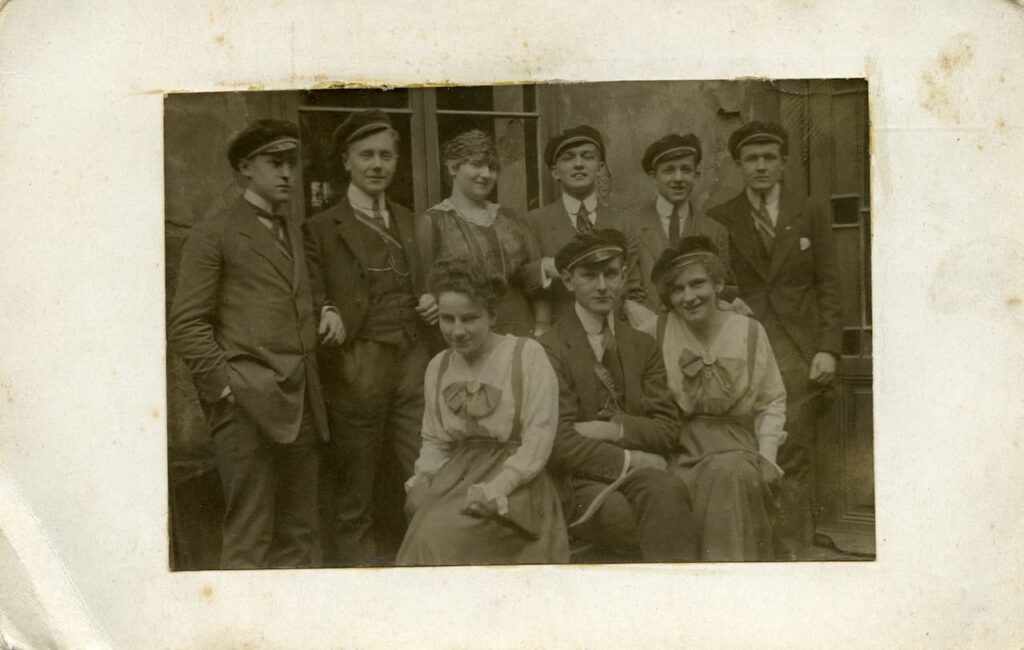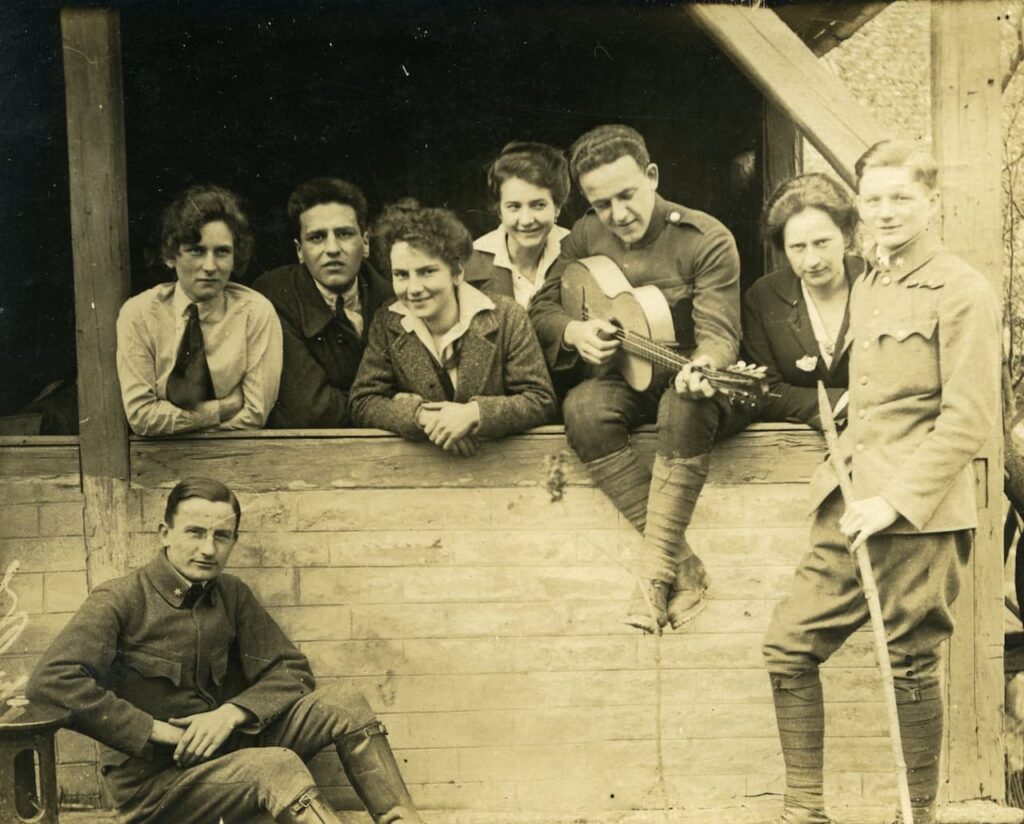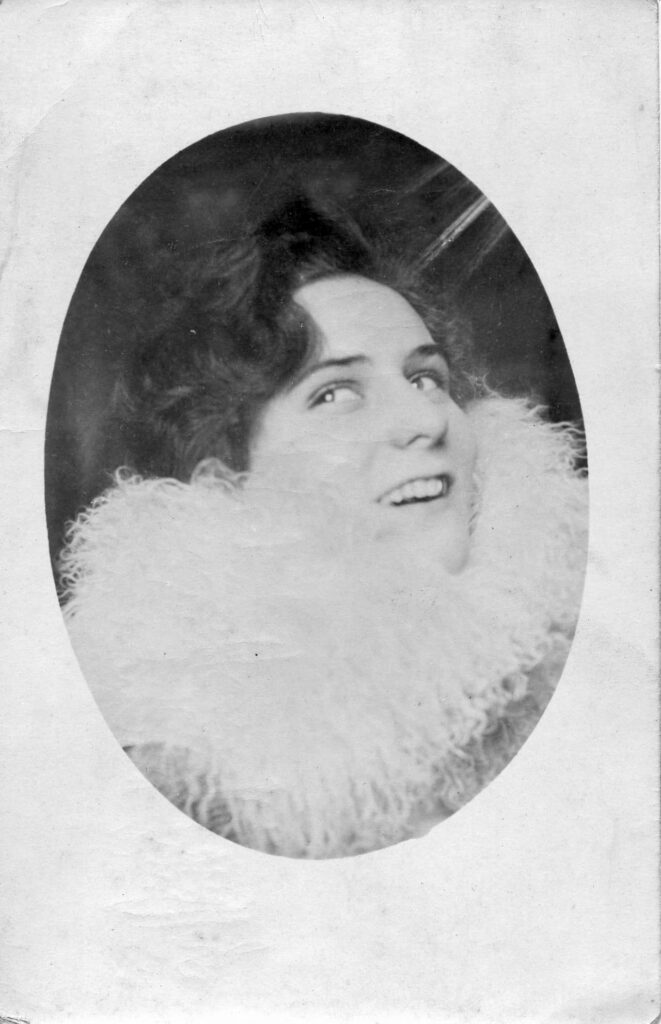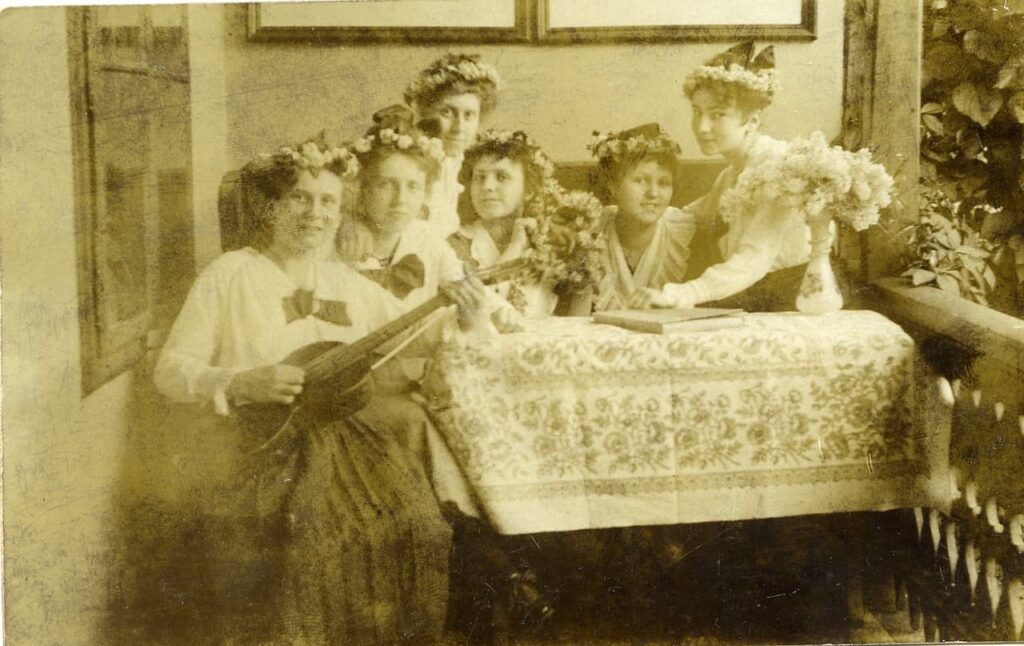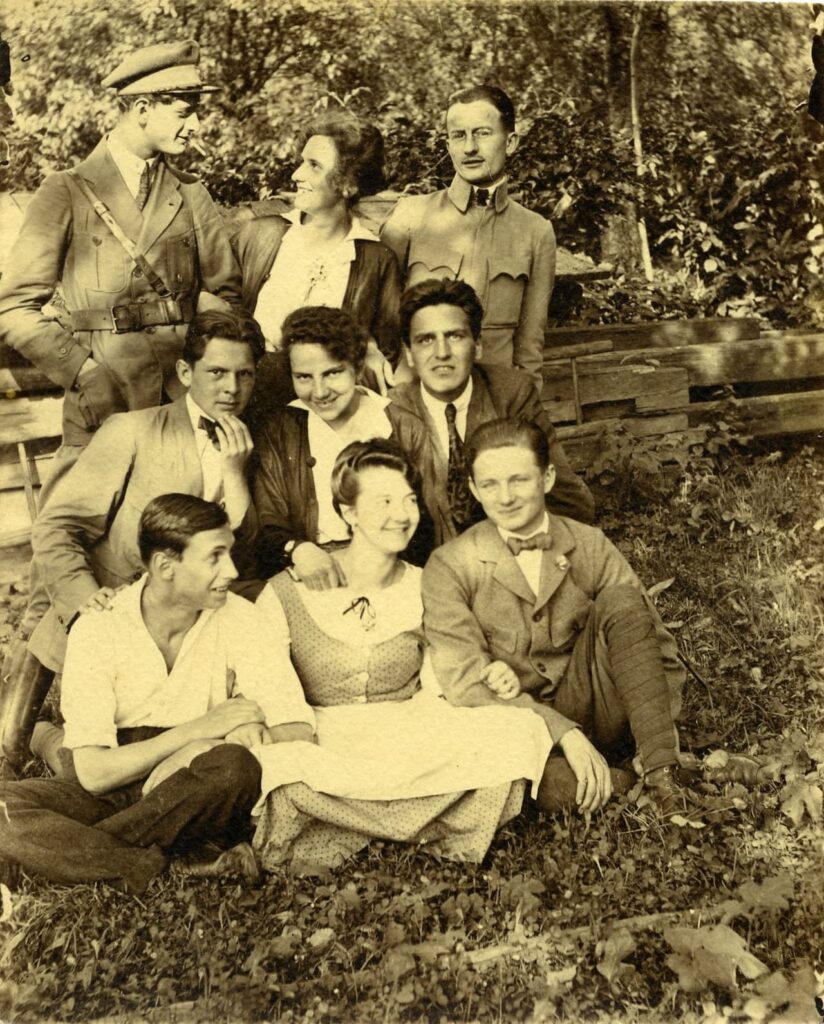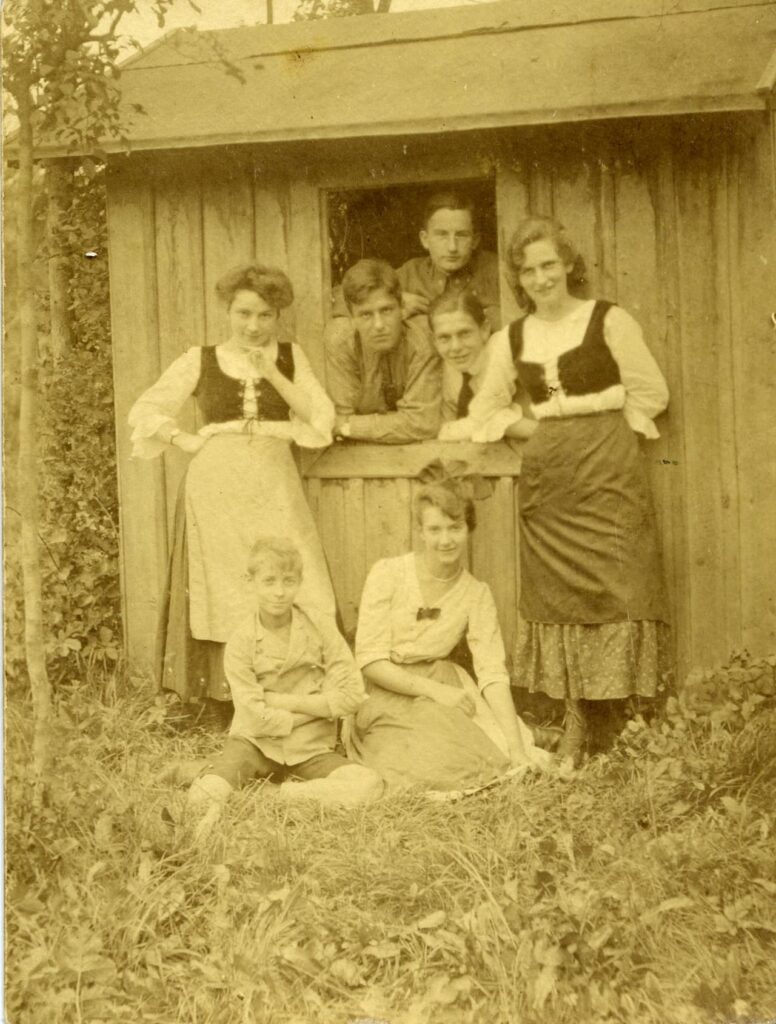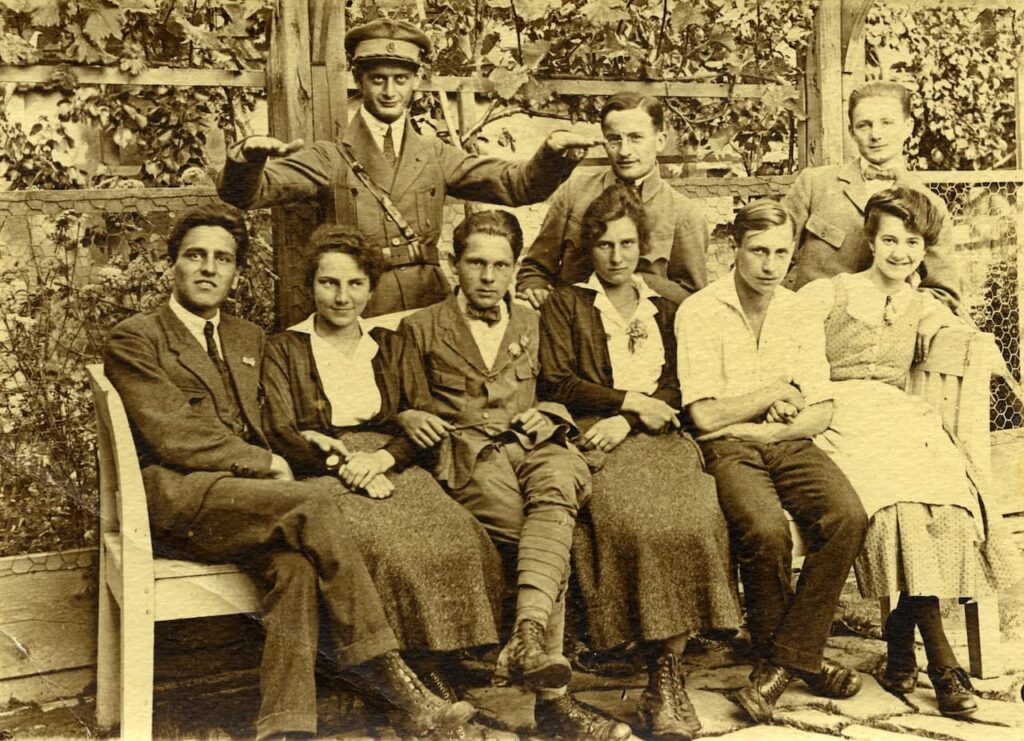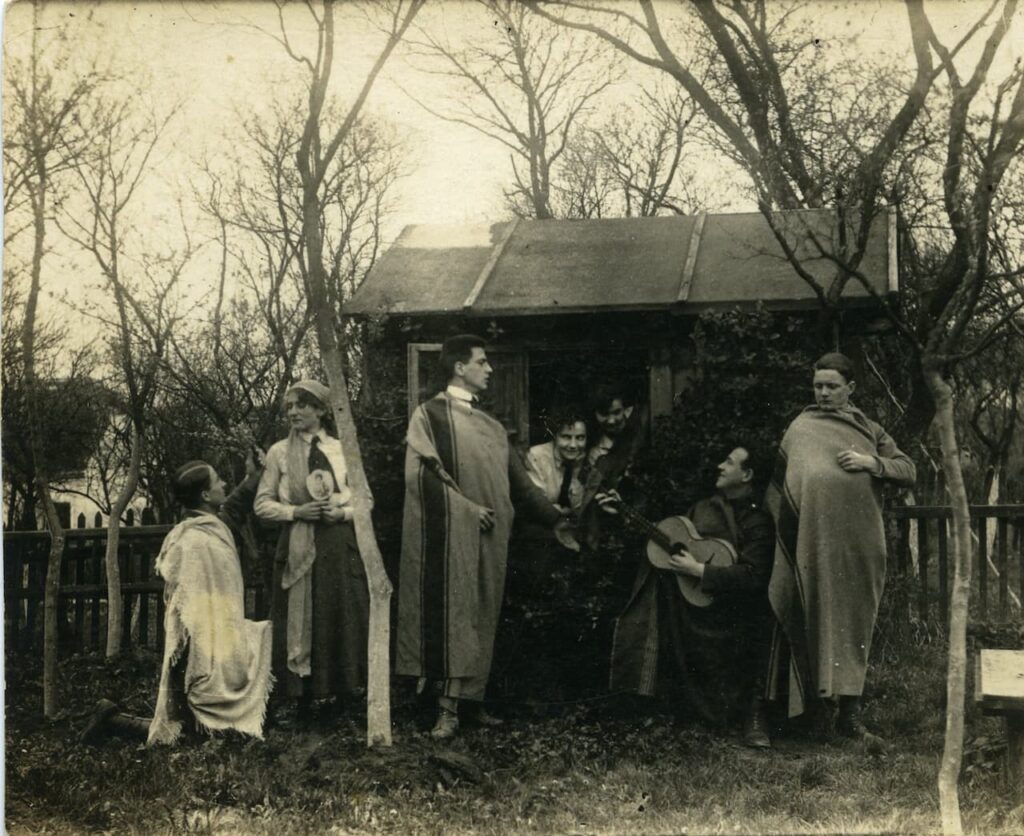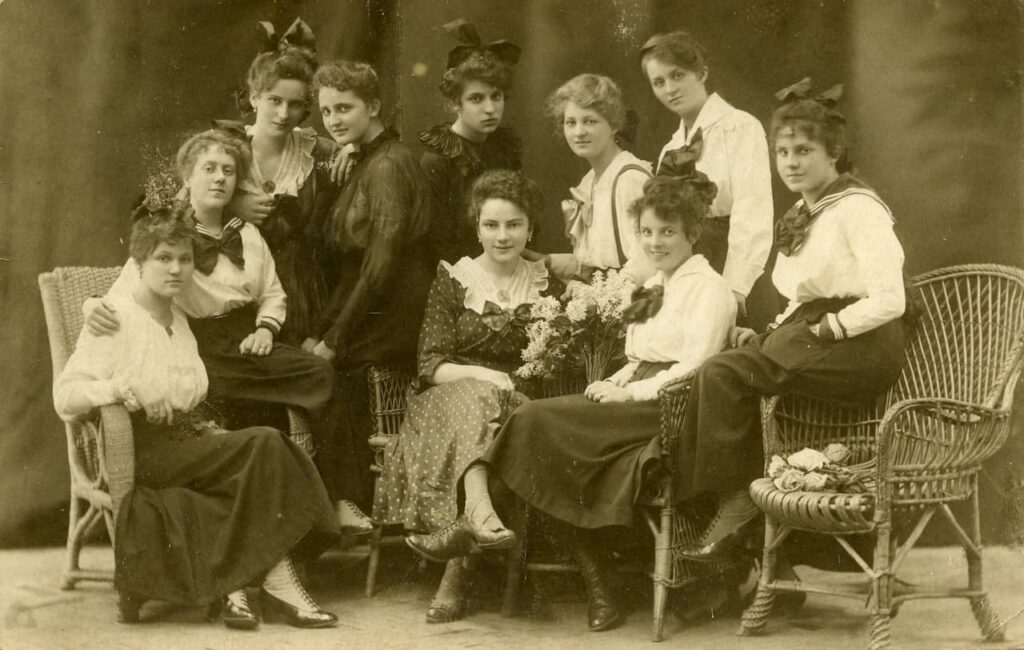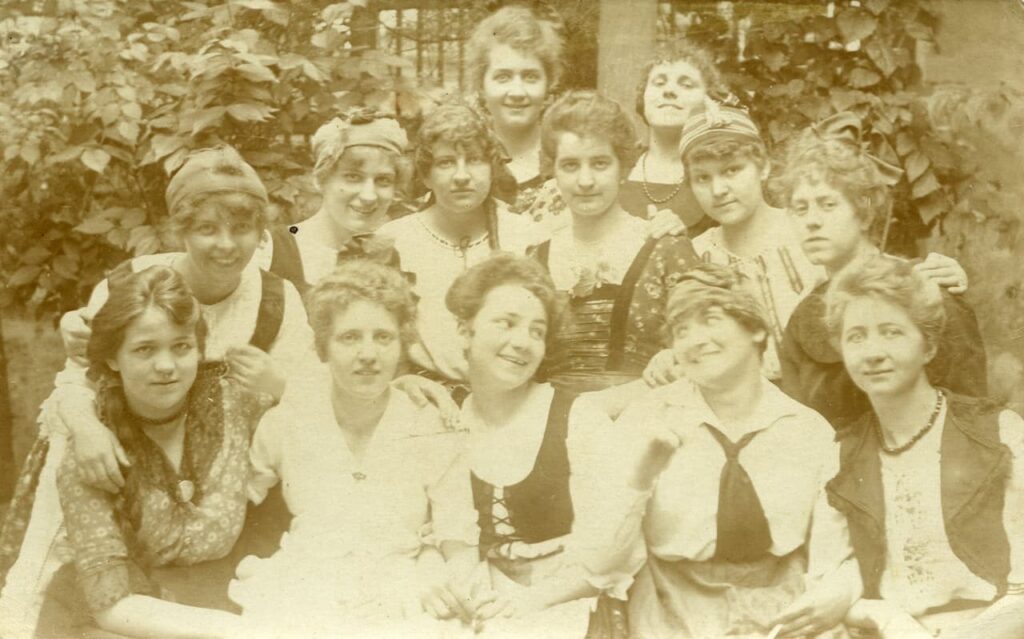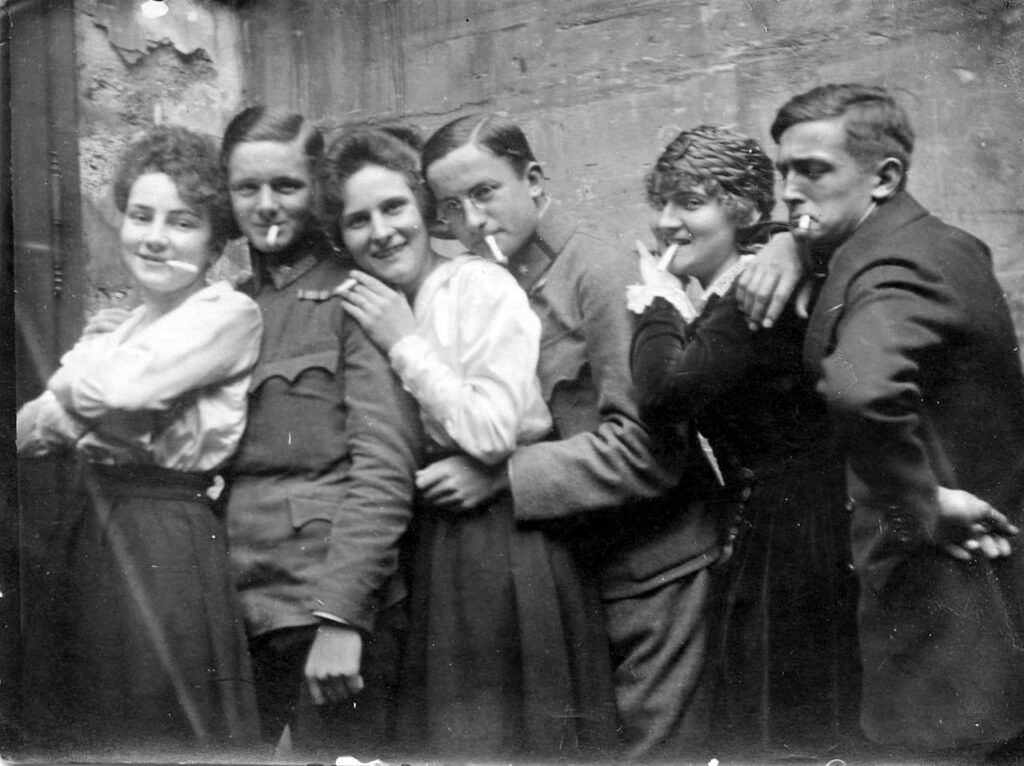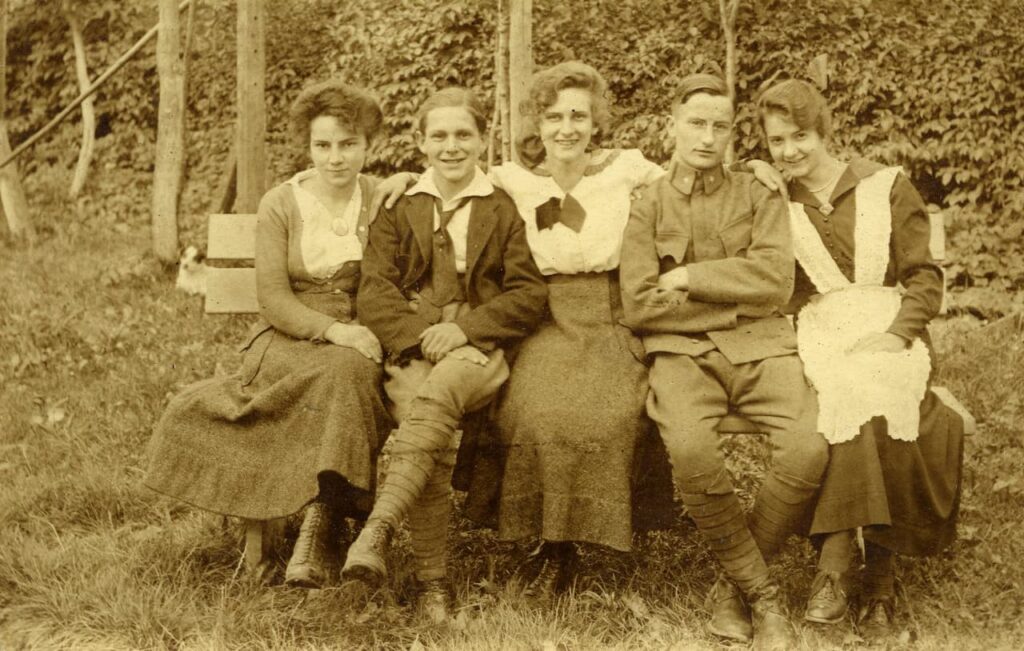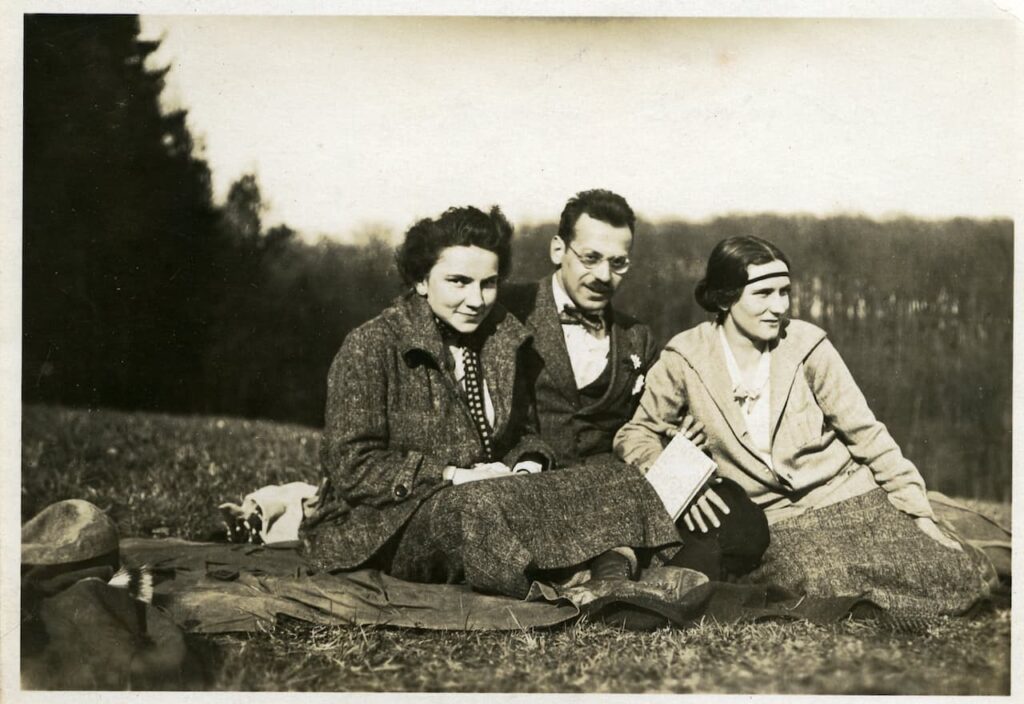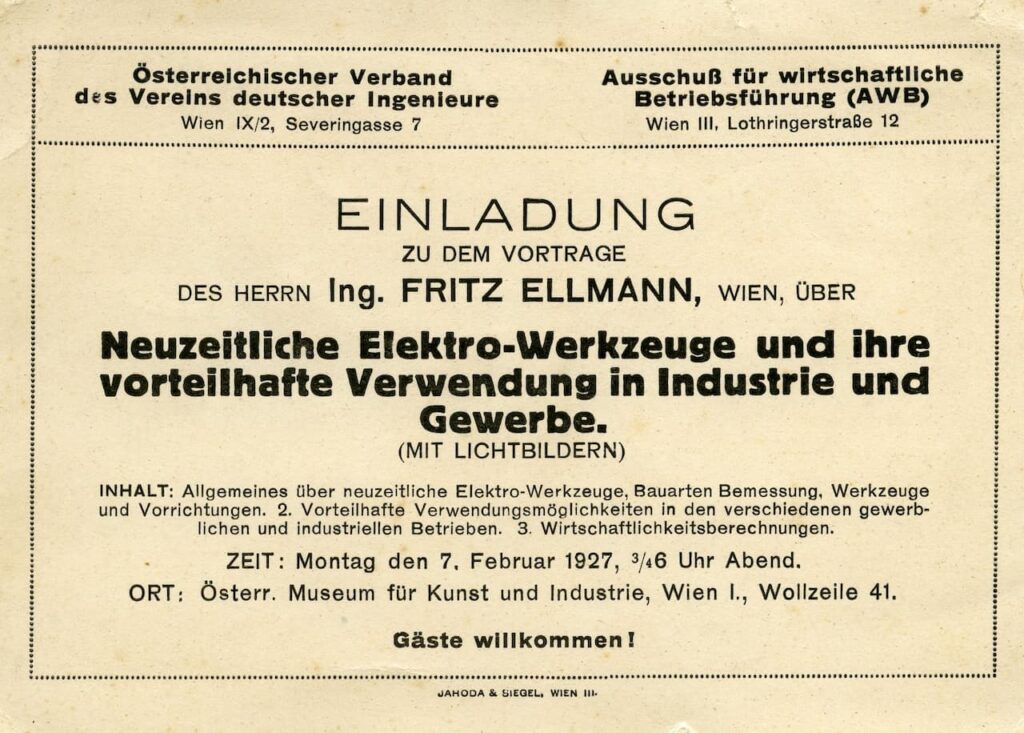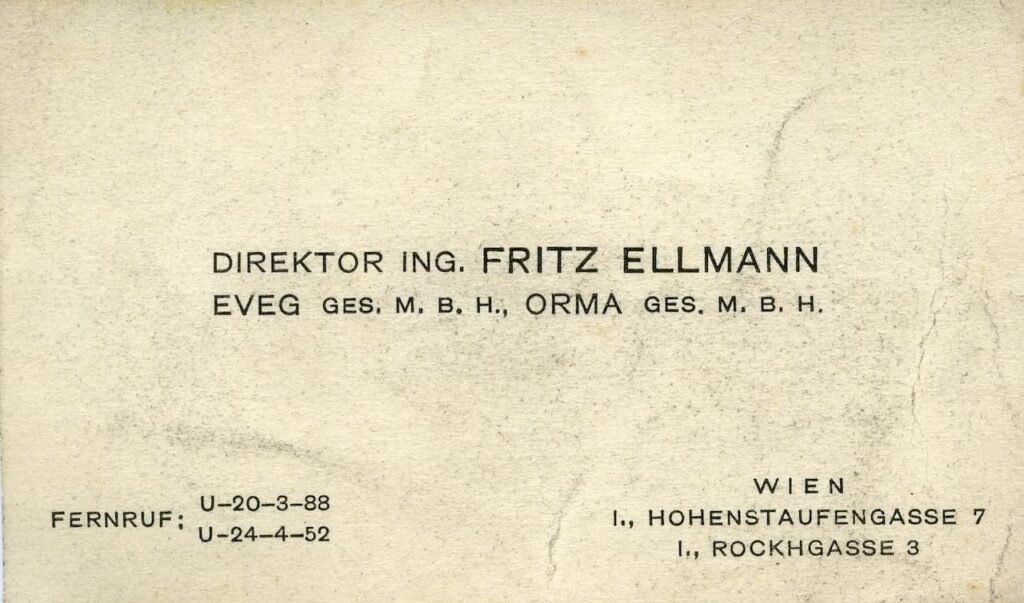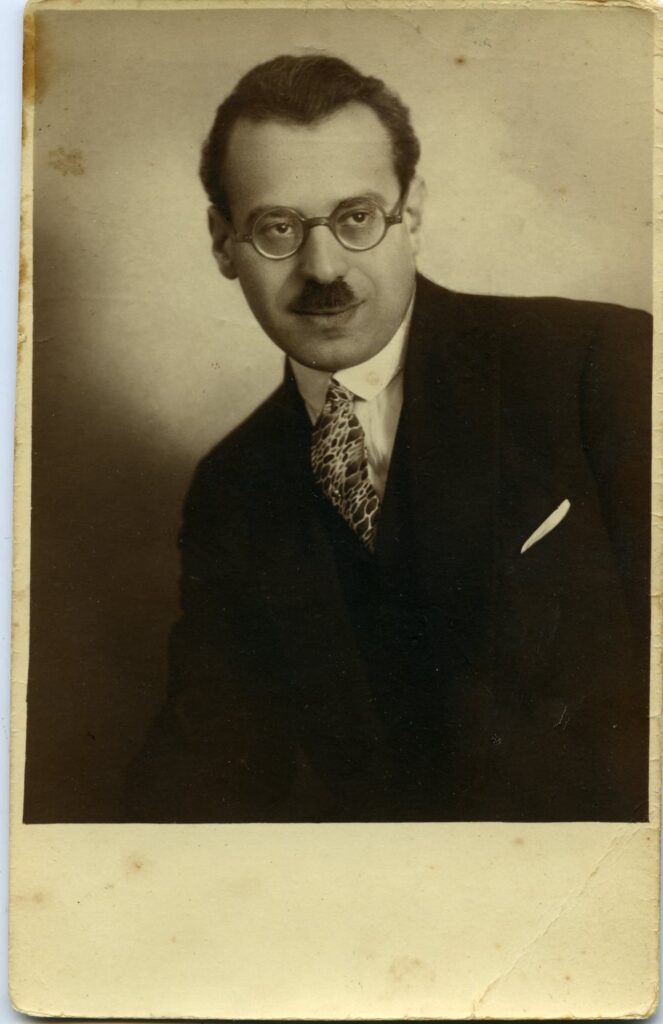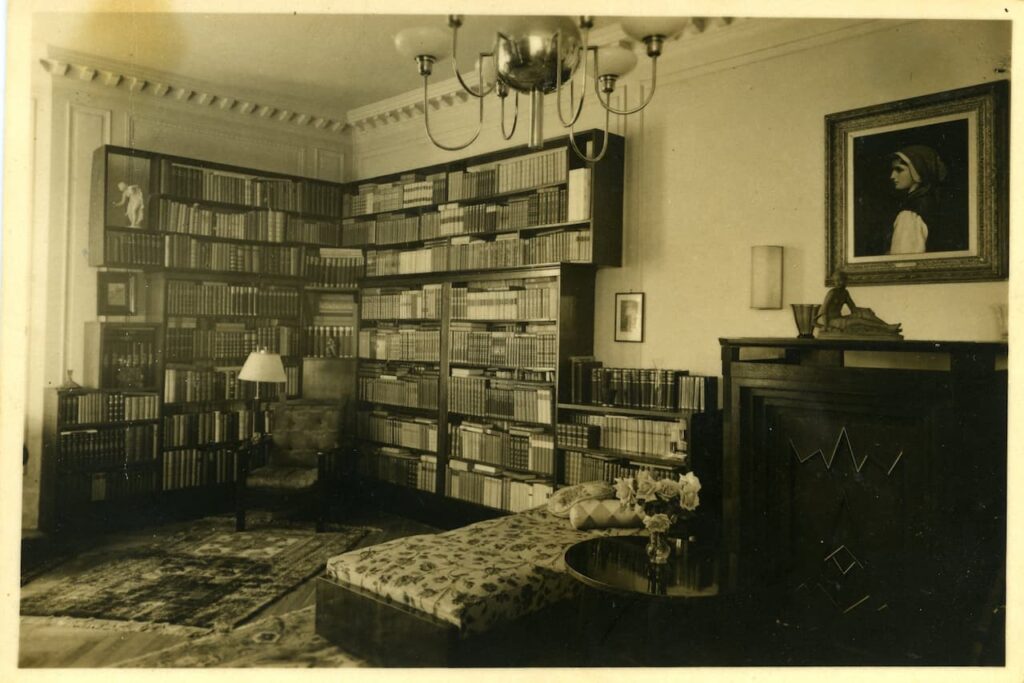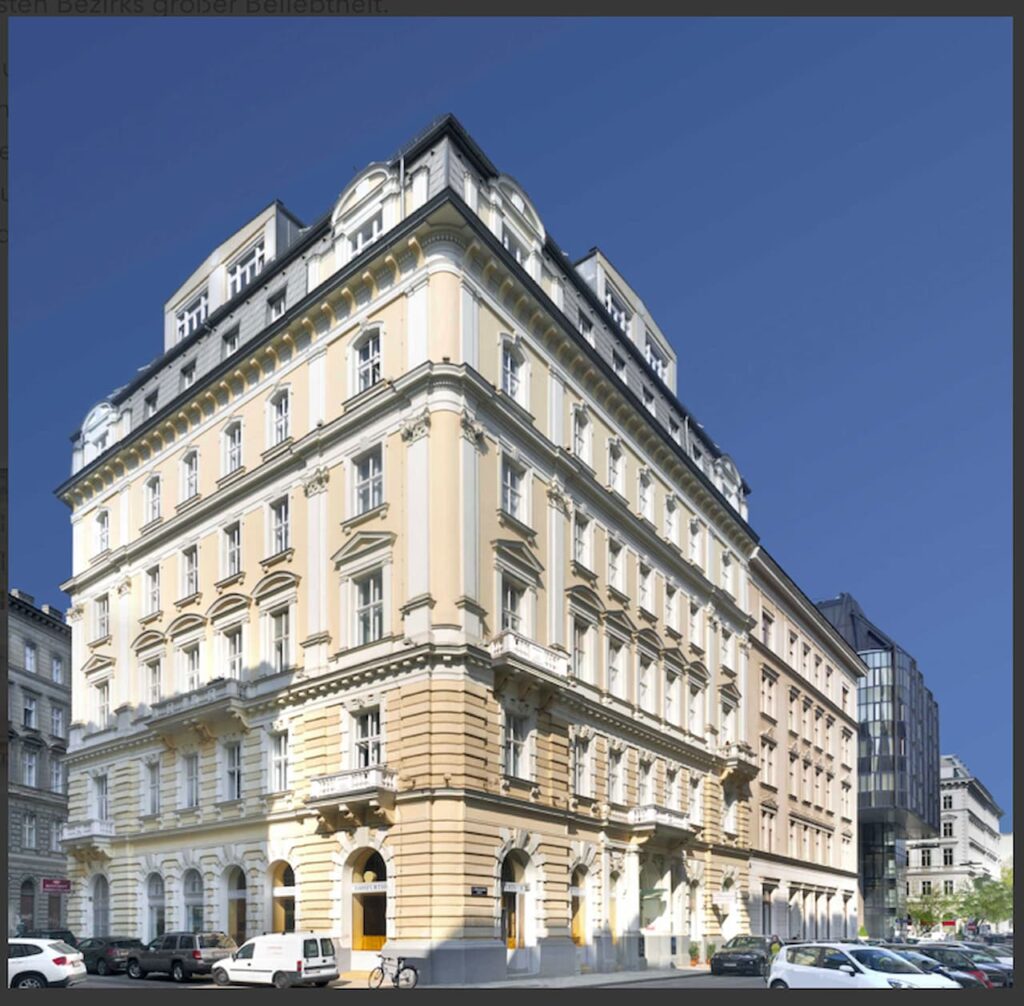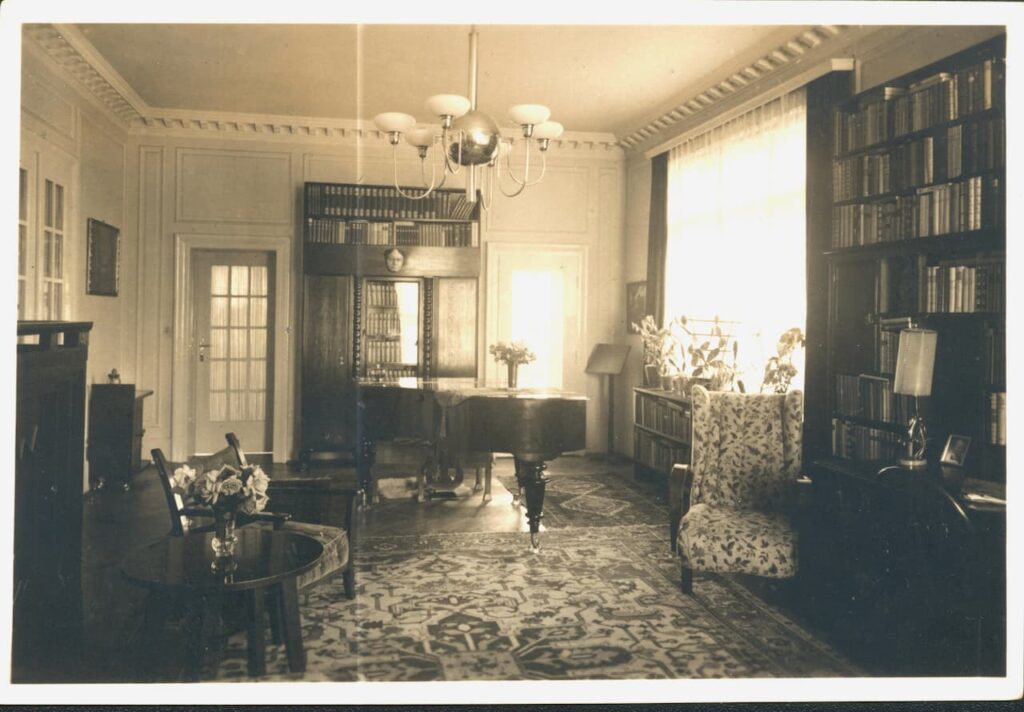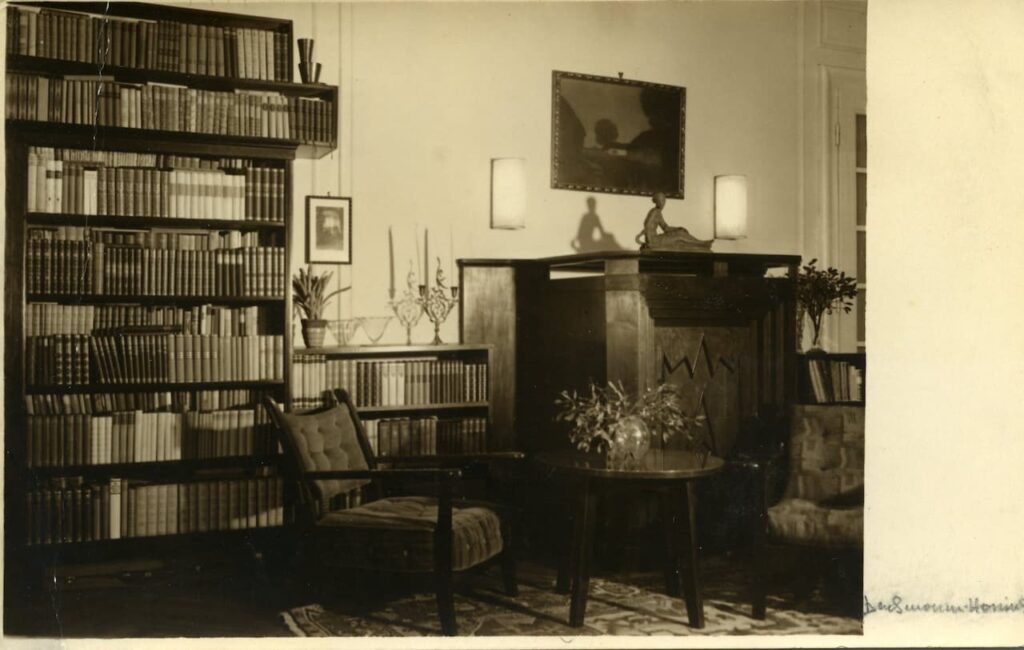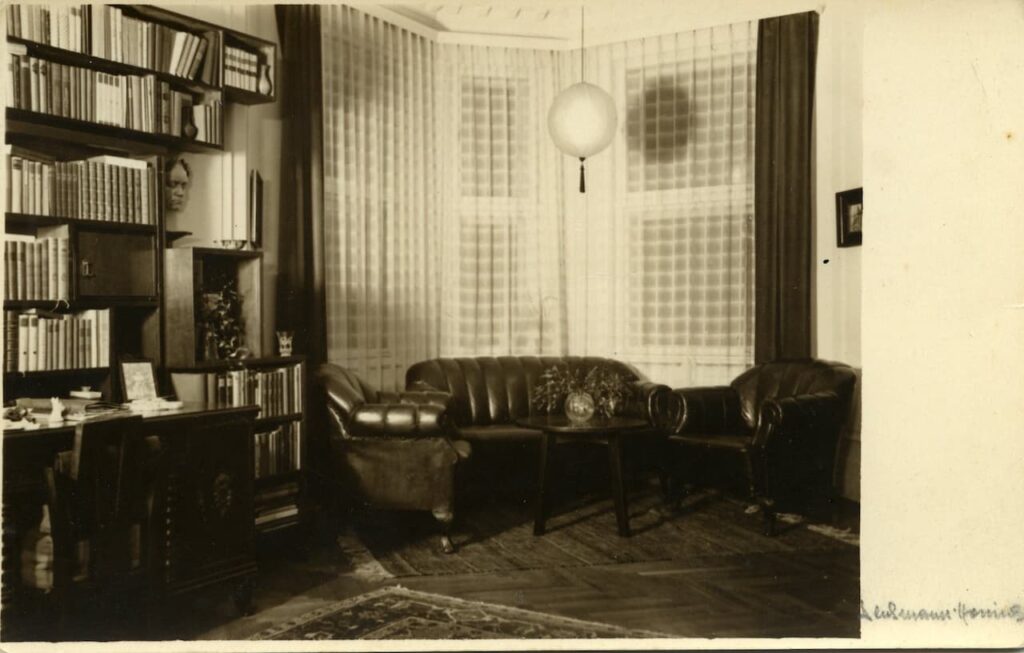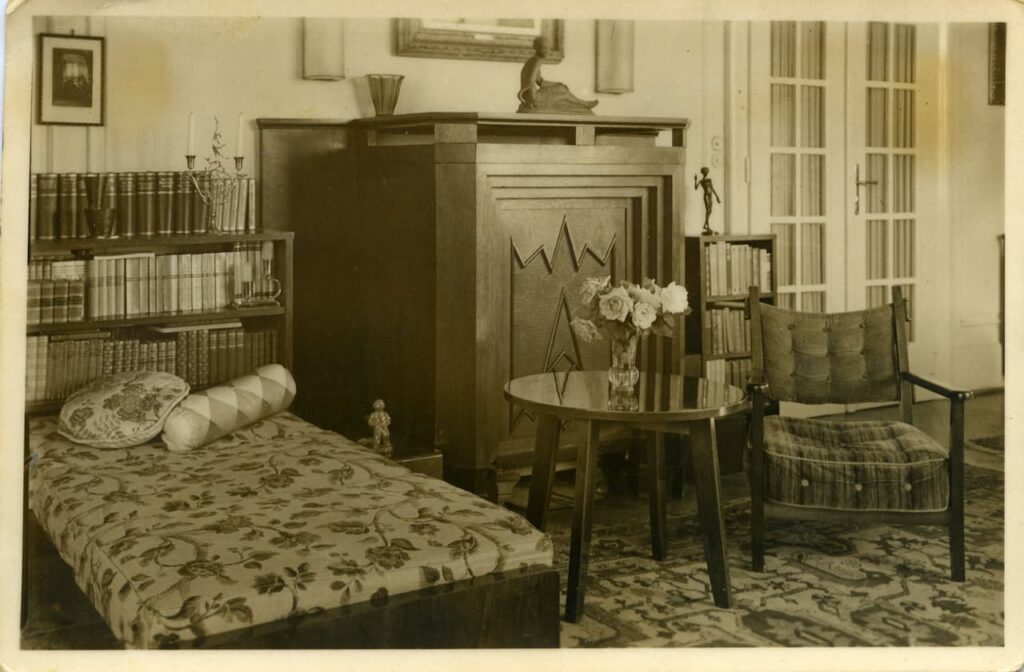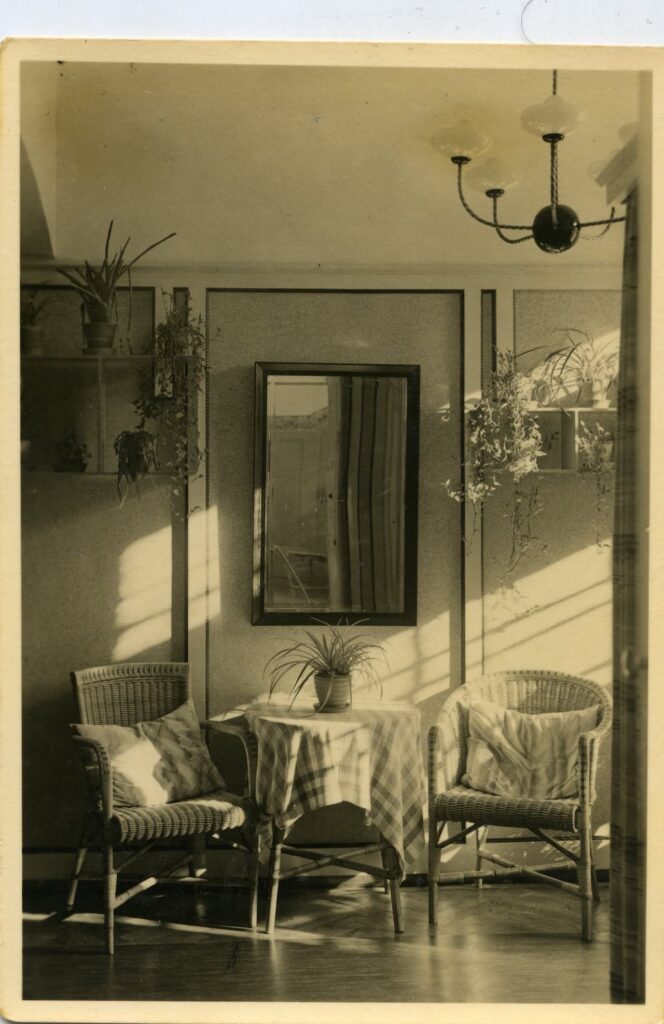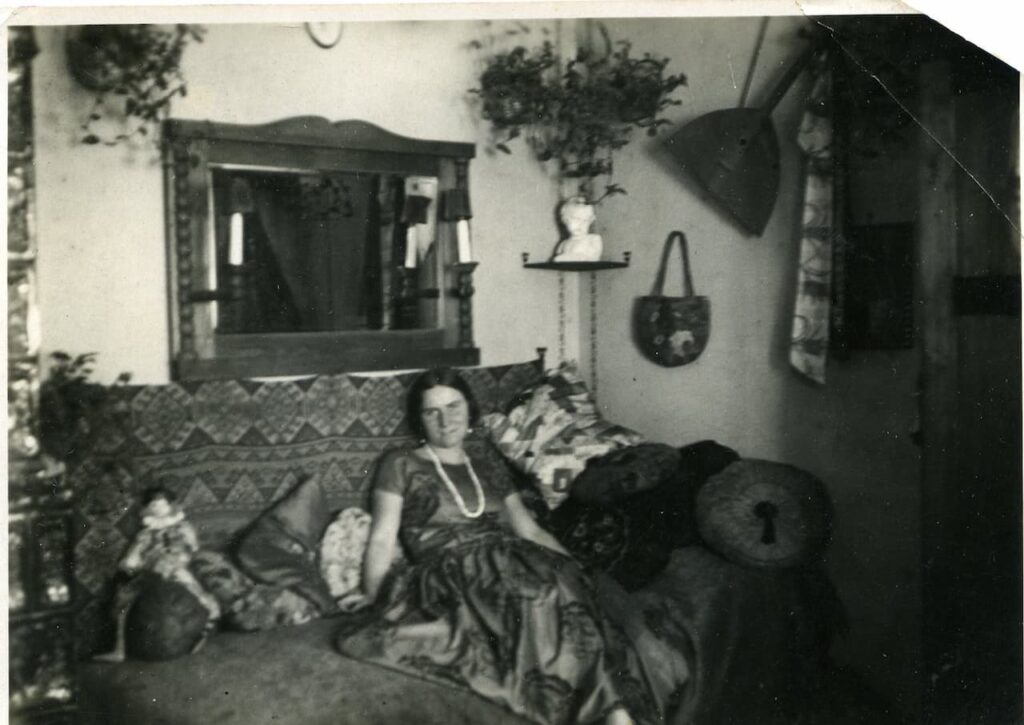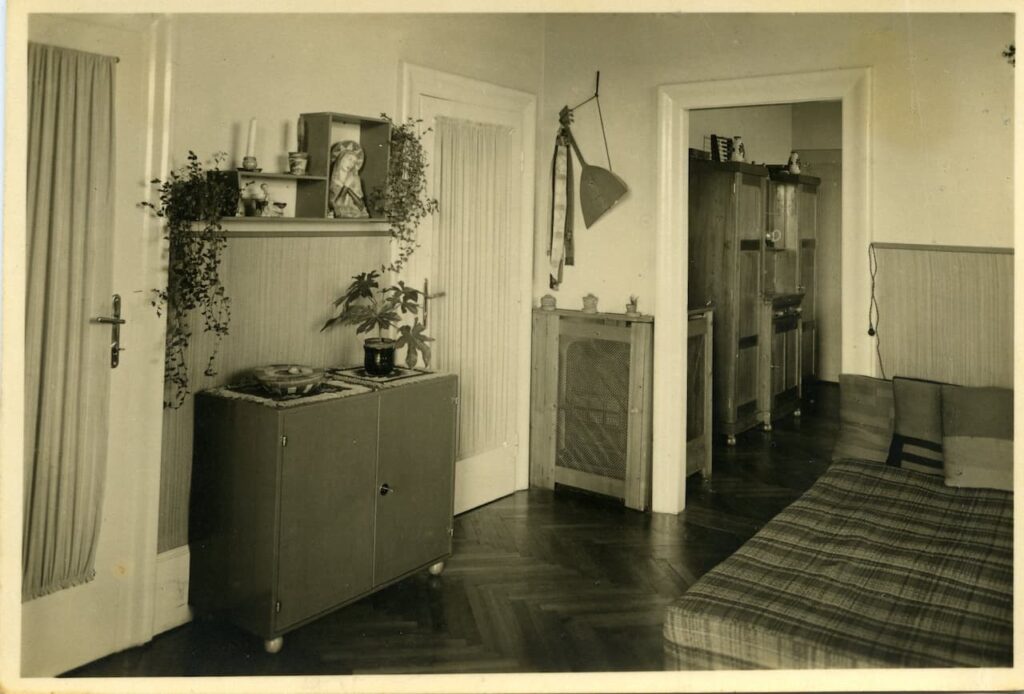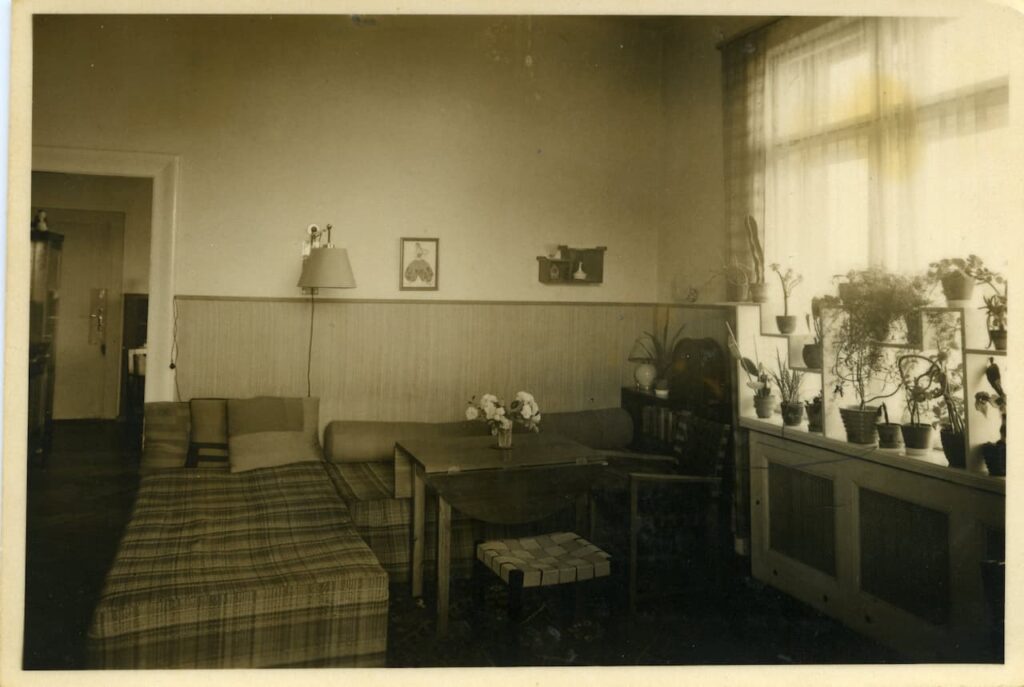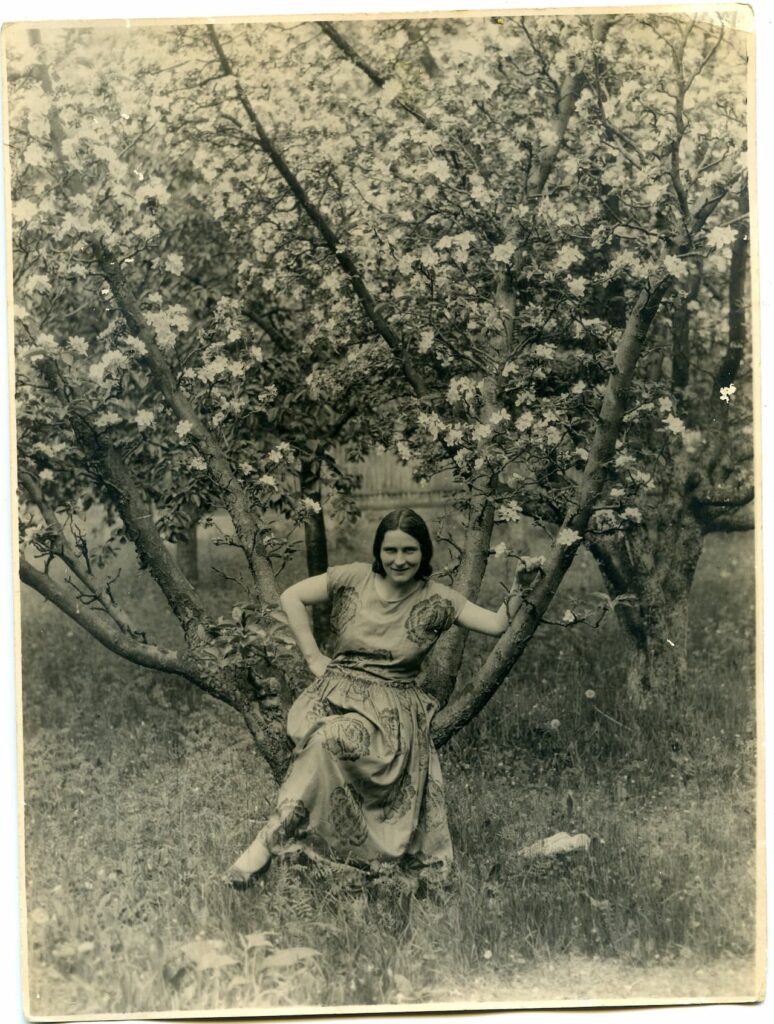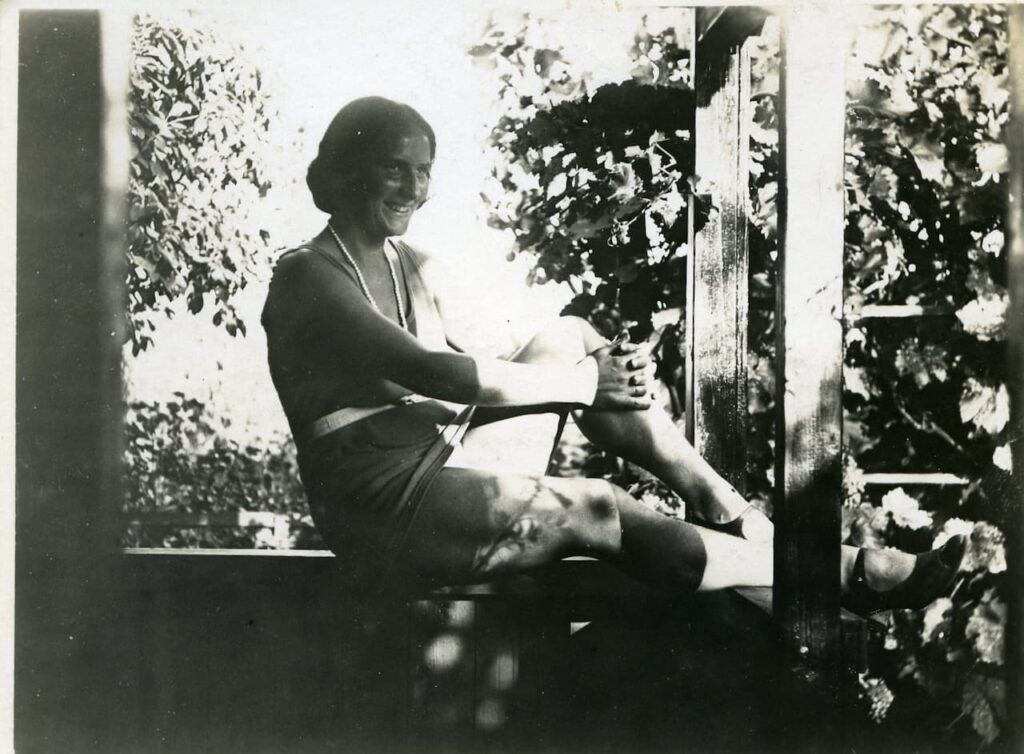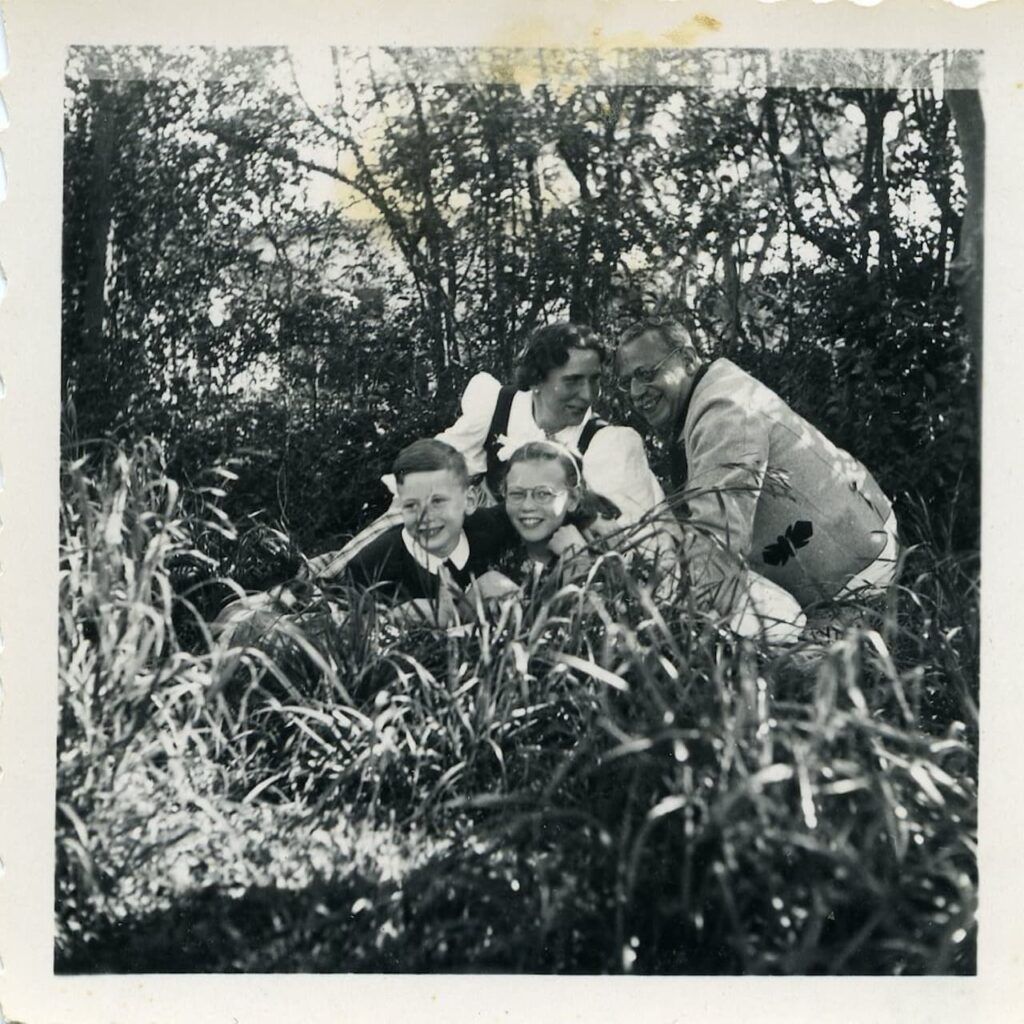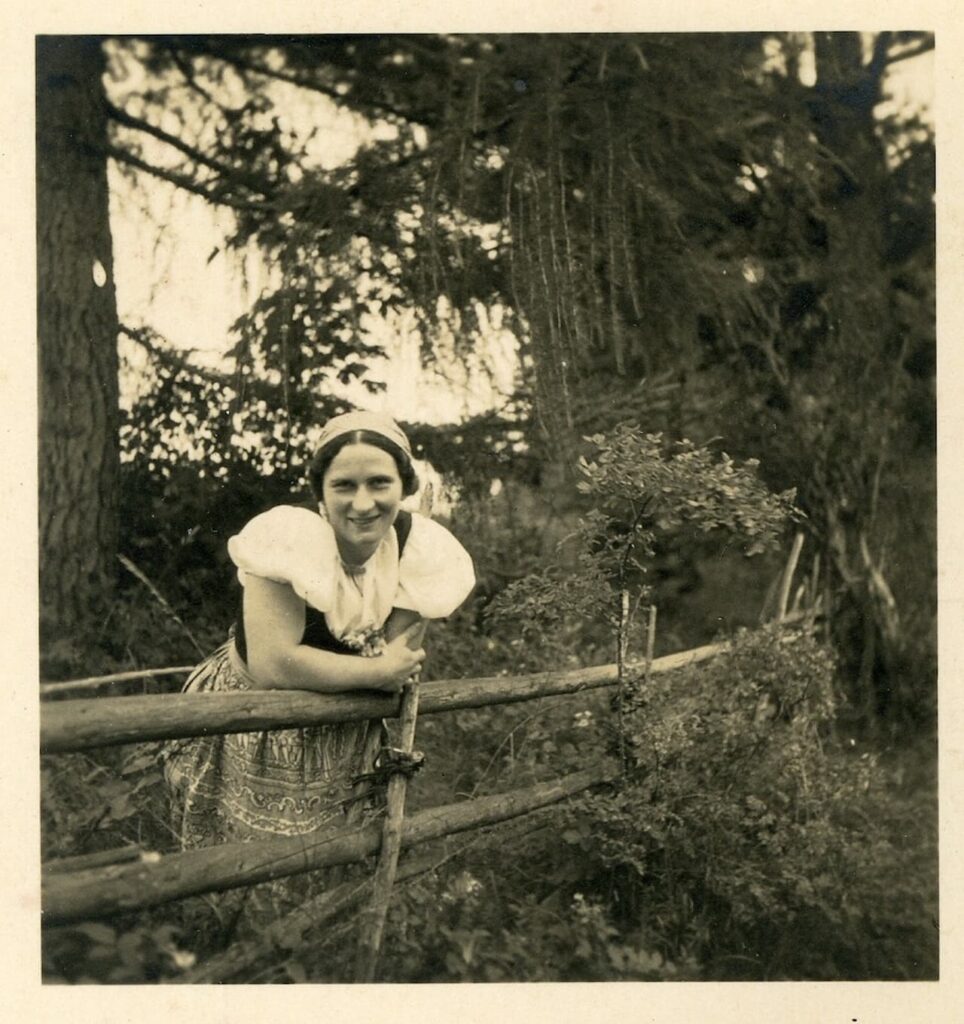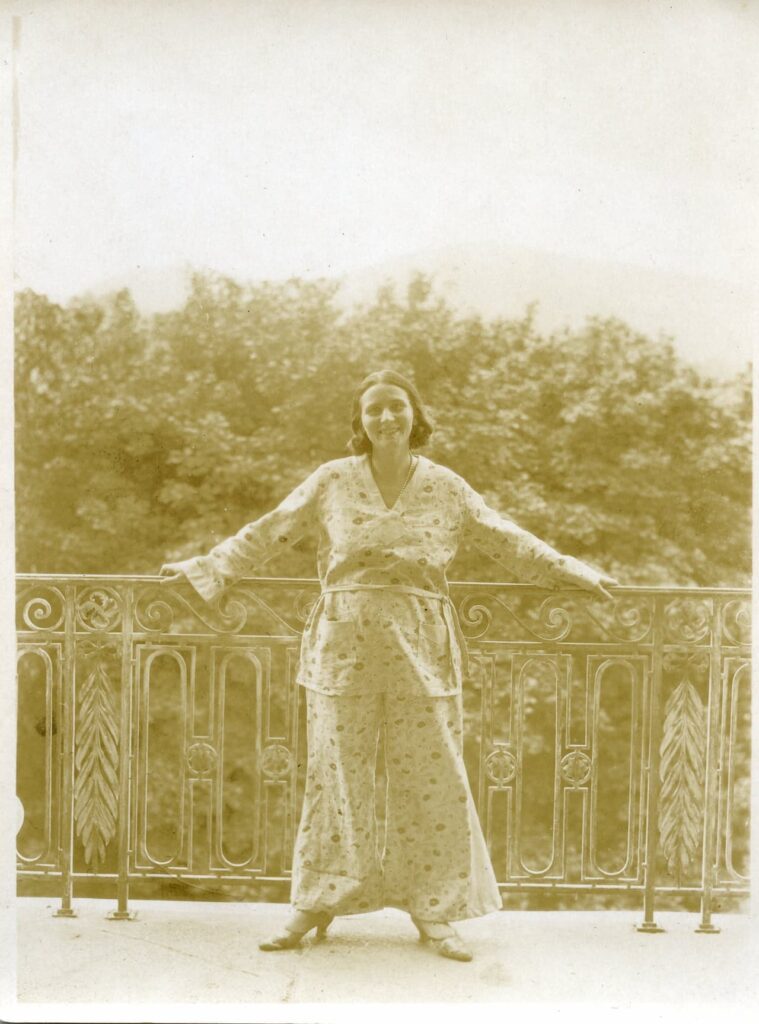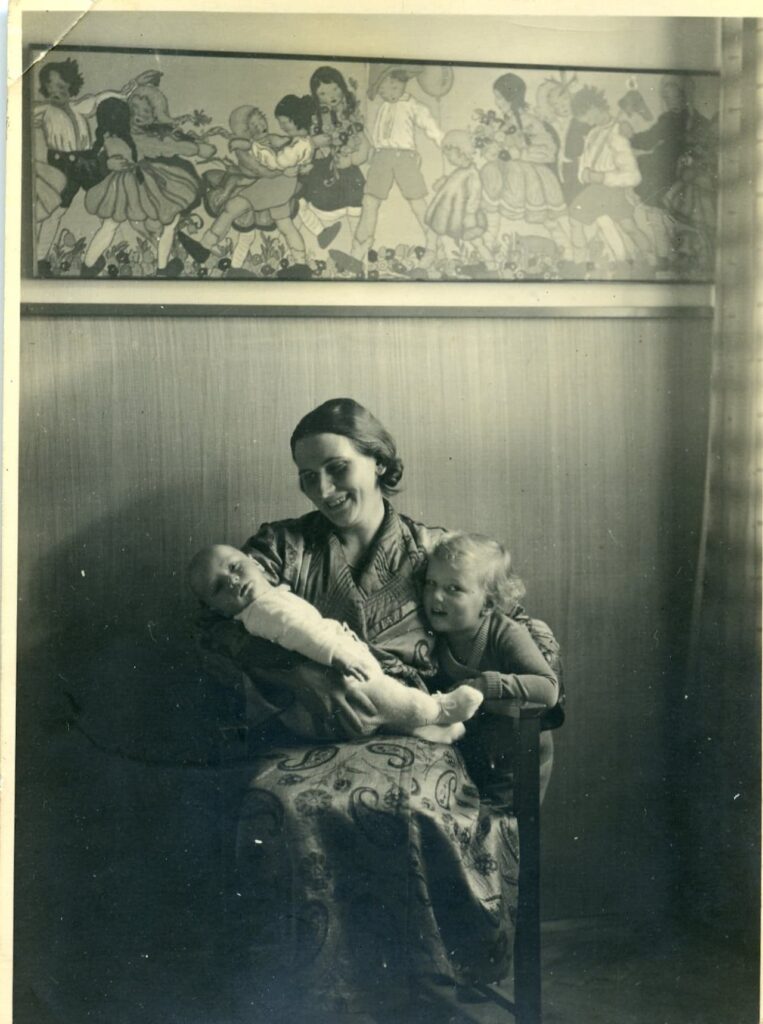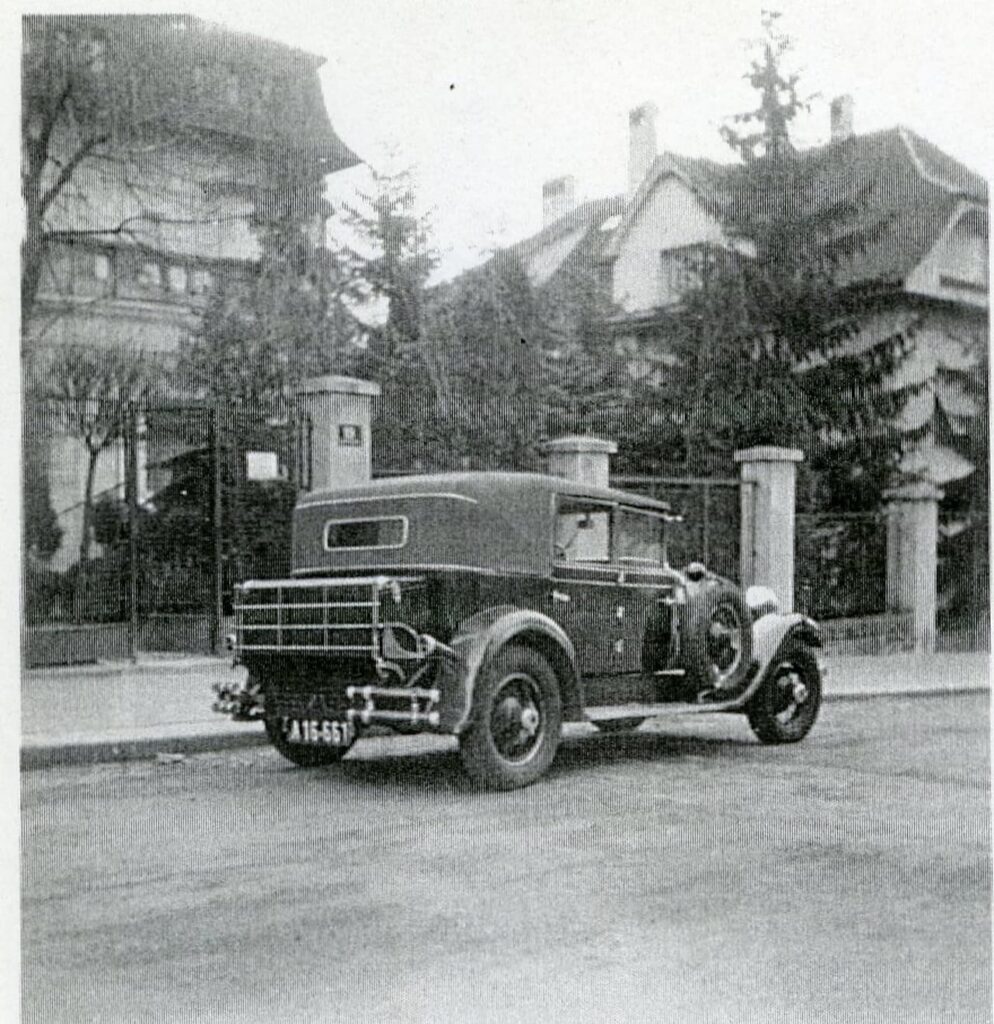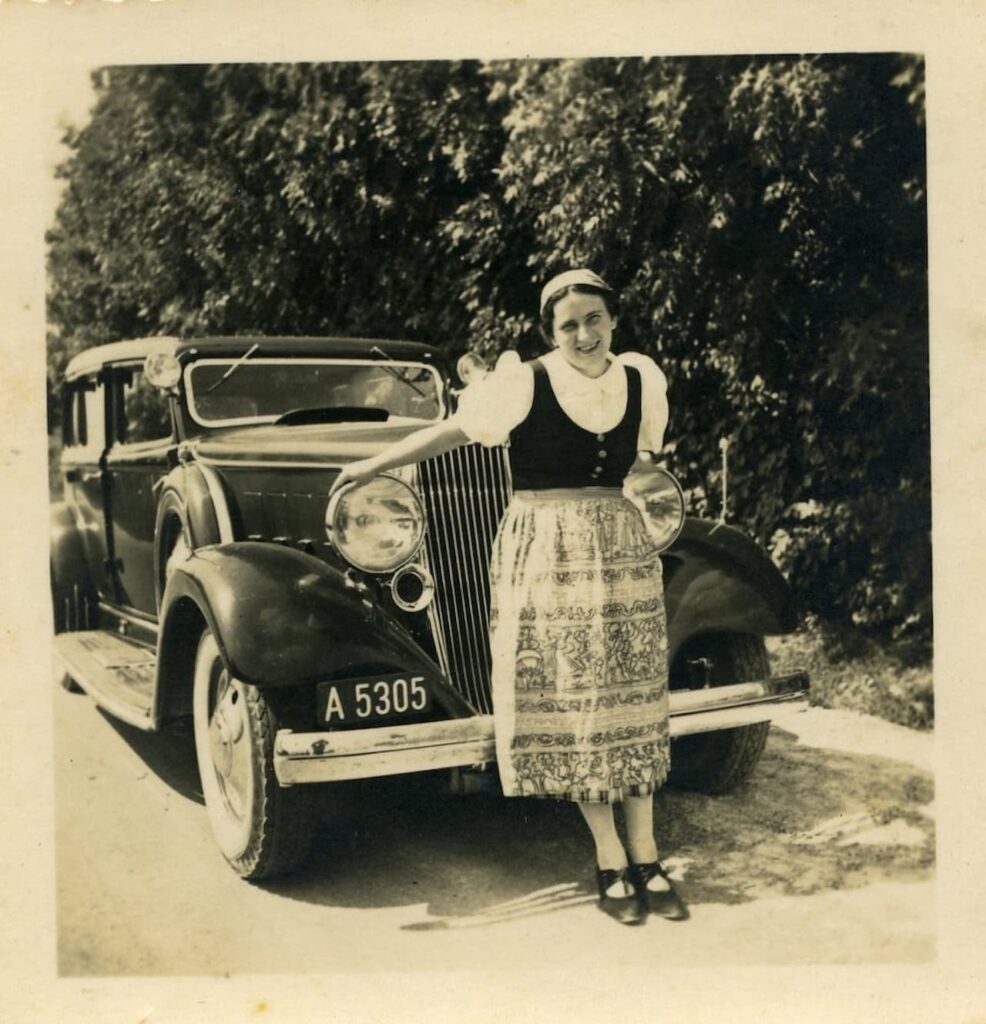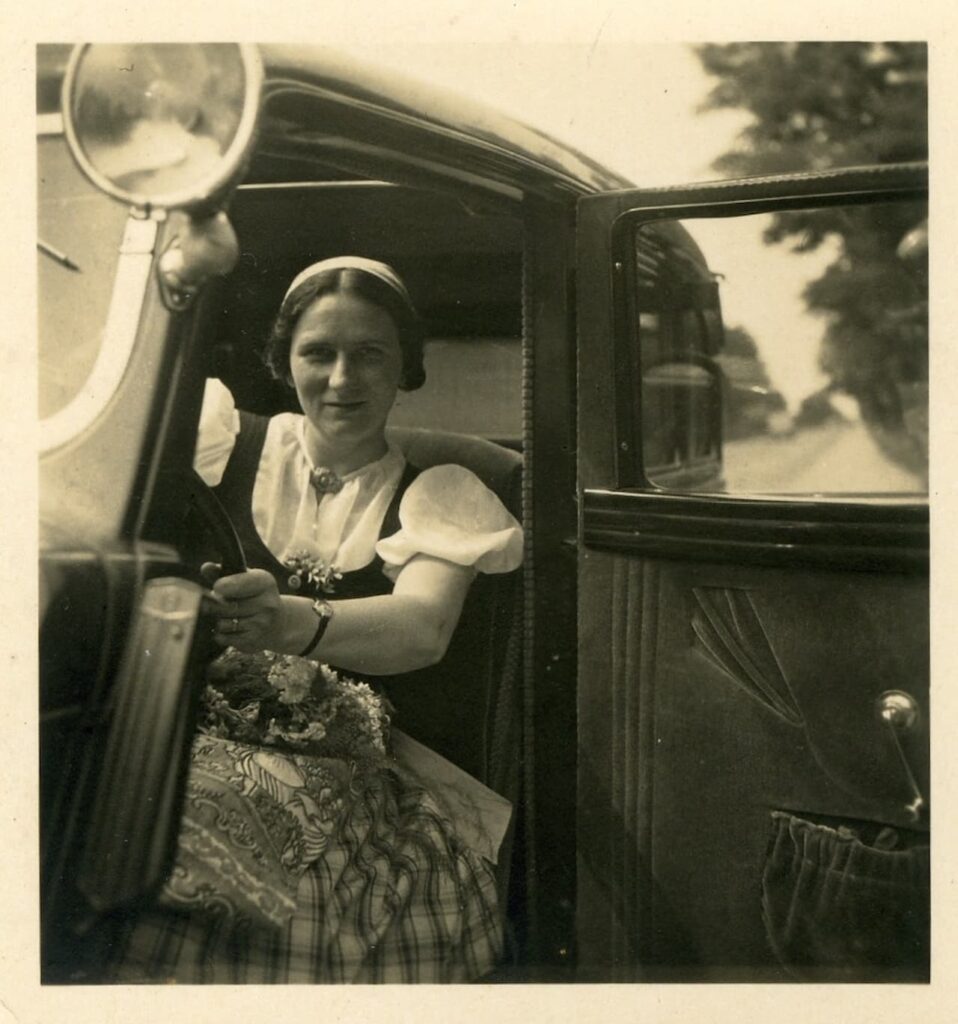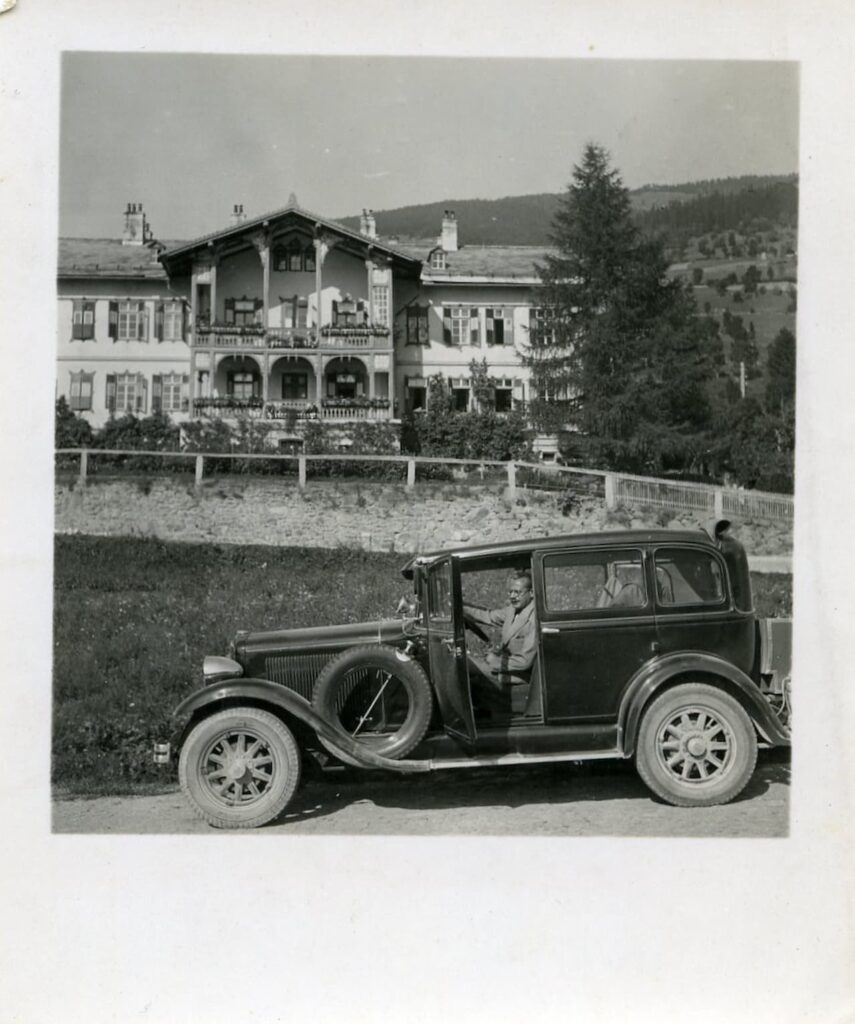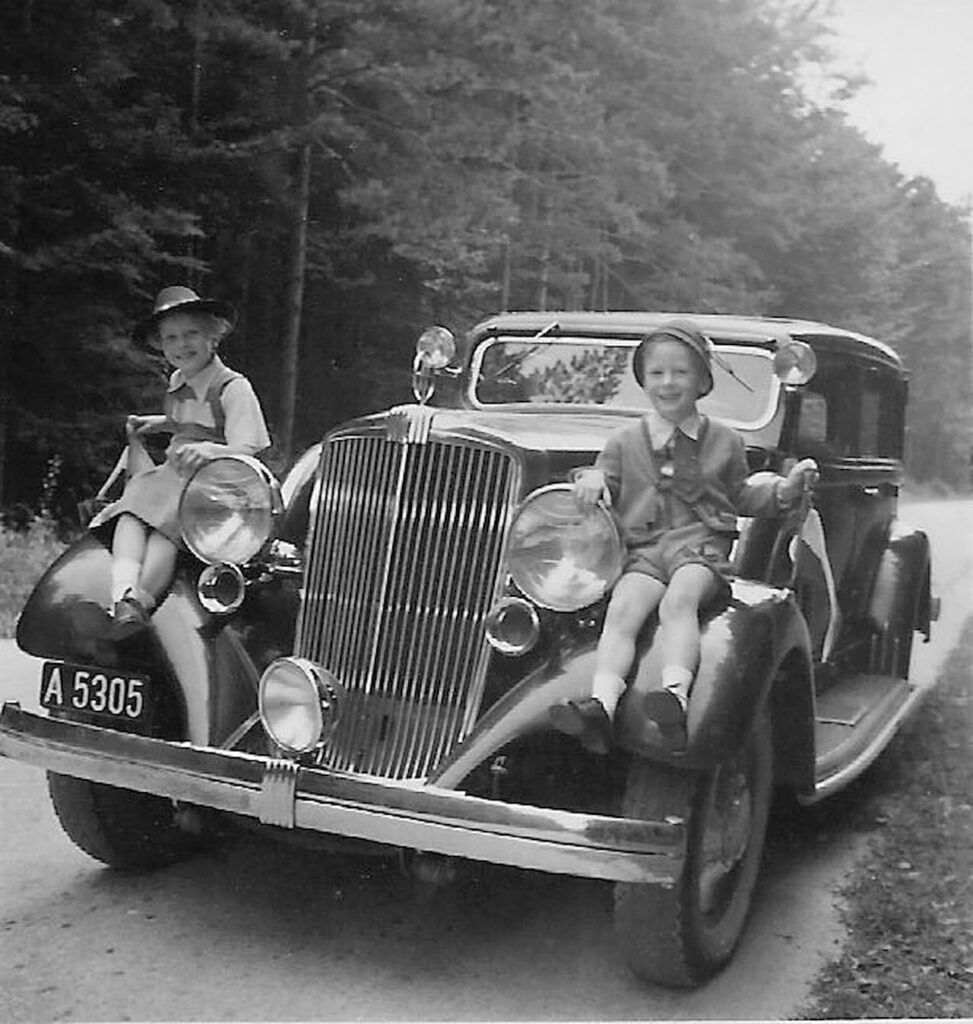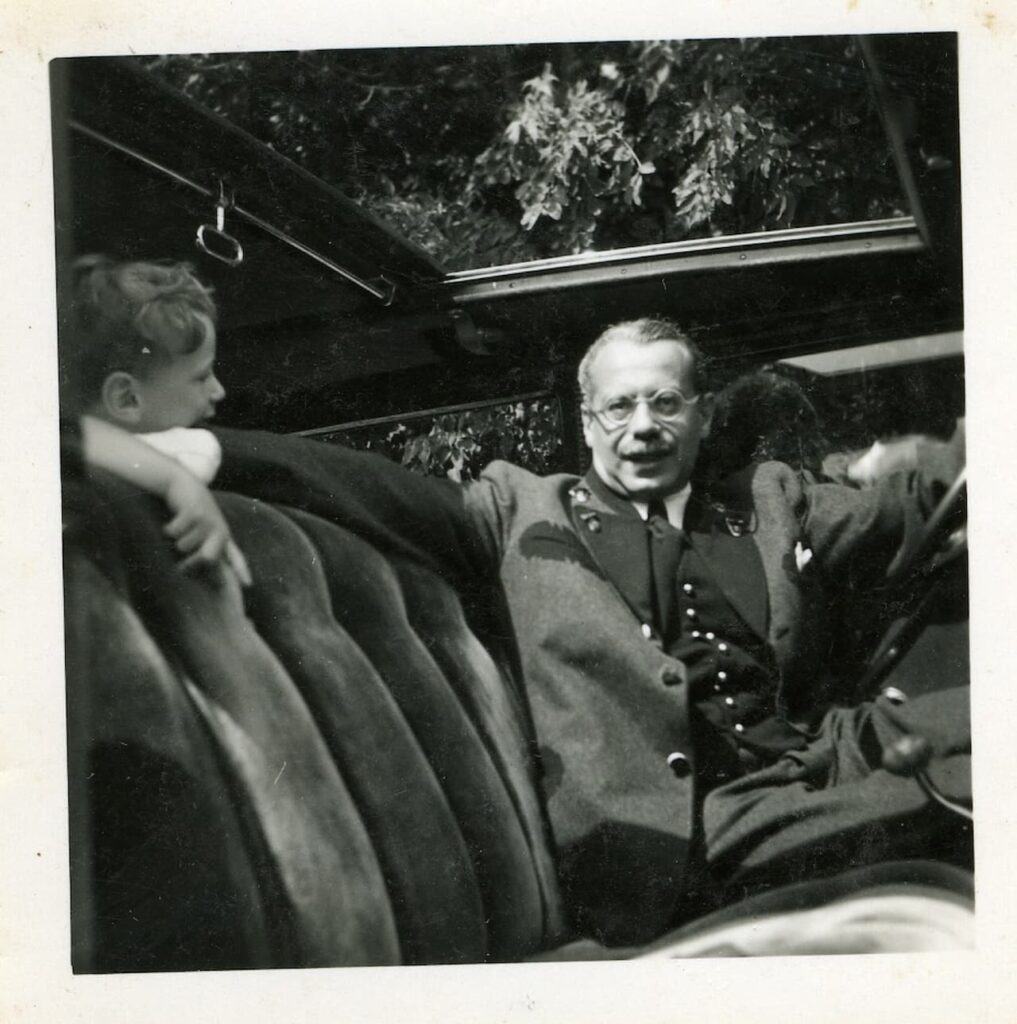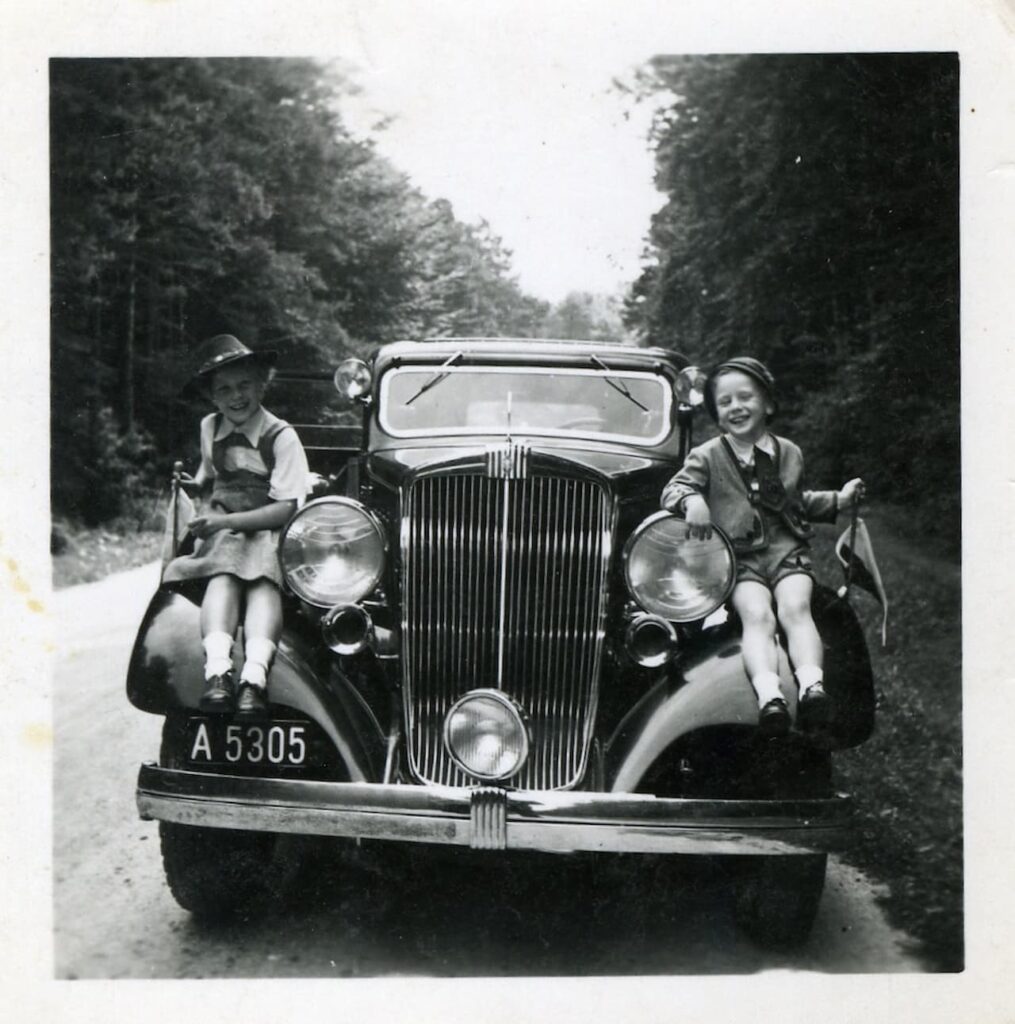My grandfather Fritz, born in 1896, was also enrolled in the Austro-Hungarian cavalry during WW1, but clearly not as an officer. He spent several years on the front, accompanied by Goethe’s complete works, beautifully bound in a gold edition. Not only he, but his entire book collection, miraculously survived the trenches unharmed. The gold edition later accompanied him to Buenos Aires. It is now, still intact, in my brother Eduardo’s home.
Fritz was a humanist and an intellectual. He personified the assimilated Jew, who saw himself first and foremost as a European, then as an Austrian, and for whom Judaism in no way constituted a lifestyle or even defined his social entourage. He married Wilhelmine (Mimi) Reichl, a Catholic from a long-established Viennese family. In order to do so, they both converted to Lutheranism, since in the 1920s weddings in Vienna were possible only within a given religious community, and neither the Catholics would accept Fritz nor the Jews accept Mimi, so both Fritz and Mimi became Lutherans. Fritz never forgot the openness of the Protestants, and never really pardoned the Jews for their short-sightedness. This resulted in my mother growing up in a home where there were few, if any, religious signs or activities, with the exception of Christmas, which was always celebrated with great pomp around a beautifully decorated tree. However, Christmas was treated as a social gathering, not a religious one, since the Ellmanns never went to church.
Wilhelmine (Mimi) Reichl, my maternal grandmother, was born in 1901. She had a sister, Paula, two years her senior, with whom she remained very close for the rest of her life. Her parents, Wilhelm and Pauline, chose the same names for their daughters, apparently not because they ran out of ideas, but because they wanted to signal continuity in a society that so much valued stability.
Mimi was beautiful, lively and had a warm personality. It’s easy to understand why Fritz, a brainy and rather severe man, fell in love with her. Mimi was attracted by the arts and had a talent for music. She studied at Vienna’s famed music conservatory and played the piano and sang wonderfully.
The Reichl’s were a well-established and quite wealthy Viennese family. Wilhelm Reichl owned a high-end food business at Keplerplatz 13 (what the French would call an ‘épicerie fine’). Located on the ground floor, his ‘Magazin’ sold rum, cocoa, tea, coffee and other (for the time quite exclusive) food supplies. He proudly advertised on his window that he was a supplier to the royal household. The building was badly damaged during WW2, but was rebuilt, and Wilhelm and Pauline continued to live there until their death in the early 1950s. Today, what was Wilhelm’s business is a discount grocery shop.
The family lived upstairs. Wilhelm, who had the reputation of being a stingy man, lost most of his wealth immediately after WW1, since he had invested large sums in government bonds, which became worthless in the chaos and inflation following the end of the war. Nevertheless, Mimi and Paula led a carefree life. They were required, as was customary at the time, to help out in the business, wrapping merchandise, transporting material and occasionally attending to clients. Wilhelm was a severe father and would not hesitate to ‘belt’ his daughters at the slightest show of indiscipline, something in no way unusual at the time. The girls loved to look out of the window across the park, in the direction of the St. Johann Church, where on weekends many couples married. The arrival of beautiful carriages made the girls revel in what their future adult lives might look like.
Mimi grew up surrounded by her sister Paula and a group of artsy friends. Photos from 1917 and 1918, taken only months before the surrender of Austria-Hungary and the breakup of the Empire, at a time when there was widespread hunger and chaos in Vienna, show us that Mimi, Paula and their friends led quite a fun and certainly carefree life.
It’s unclear where Mimi and Fritz met, but he seems to have fallen head over heels for her. They were united in 1923 and had, like my paternal grandparents, a very happy marriage. My mother Lisl was born in 1930, followed by my uncle Heinz in 1933.
The studious, meticulous and somewhat pedantic Fritz studied engineering, was fond of his titles and enjoyed giving lectures. He was an astute businessman and made a fortune by manufacturing lightbulbs, at a time when electricity was entering every aspect of life in Austria. Through an in-depth analysis of existing patents, Fritz was able to circumvent them and to offer to the Austrian market essentially the same lightbulbs that the large manufacturers produced, at a fraction of the price. This gained his company a large market share. After a few years, Osram (at the time one of the largest international manufacturers of light bulbs) bought Fritz’s business at a high price.
The Osram purchase agreement prevented Fritz from manufacturing lightbulbs, but it did not bar him from selling lighting equipment. He promptly set up another business, designing high-end lamps, with which he was very successful. His ceiling lamps were beautiful and very stylish. His very elegant office was in the fashionable Hohenstaufengasse 7, in the heart of Vienna. Already in the 1930s an emblematic building, it survived WW2 intact and is now one of the most desirable addresses in Vienna.
The Ellmanns lived a very comfortable life at Glanzinggase 19, Pötzleinsdorf, in the outskirts of Vienna. The large house was exquisitely decorated and included a garden full of fruit trees. Mimi was an excellent cook and the Ellmanns would invite one or more couples for a sumptuous meal regularly on a Friday. After dinner, Mimi played the piano, accompanied by Fritz on the violin. The household was assisted by a permanent staff, including a driver, a cook and a nanny.
As a man interested in mechanics, Fritz developed an early fascination for cars. His wealth allowed him to own the latest models, at a time when few could afford such luxuries.
While Mimi focused her attention on the home and the family, Fritz, when not working, was usually locked up in his library, reading. I inherited many of his books. He was a man interested in the humanities—his beautifully bound books focus on anthropology, sociology, philosophy and history. In literature, he preferred the classics, with a marked interest for Goethe.
The River
Pedro Simko

The River
Pedro Simko

